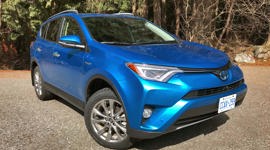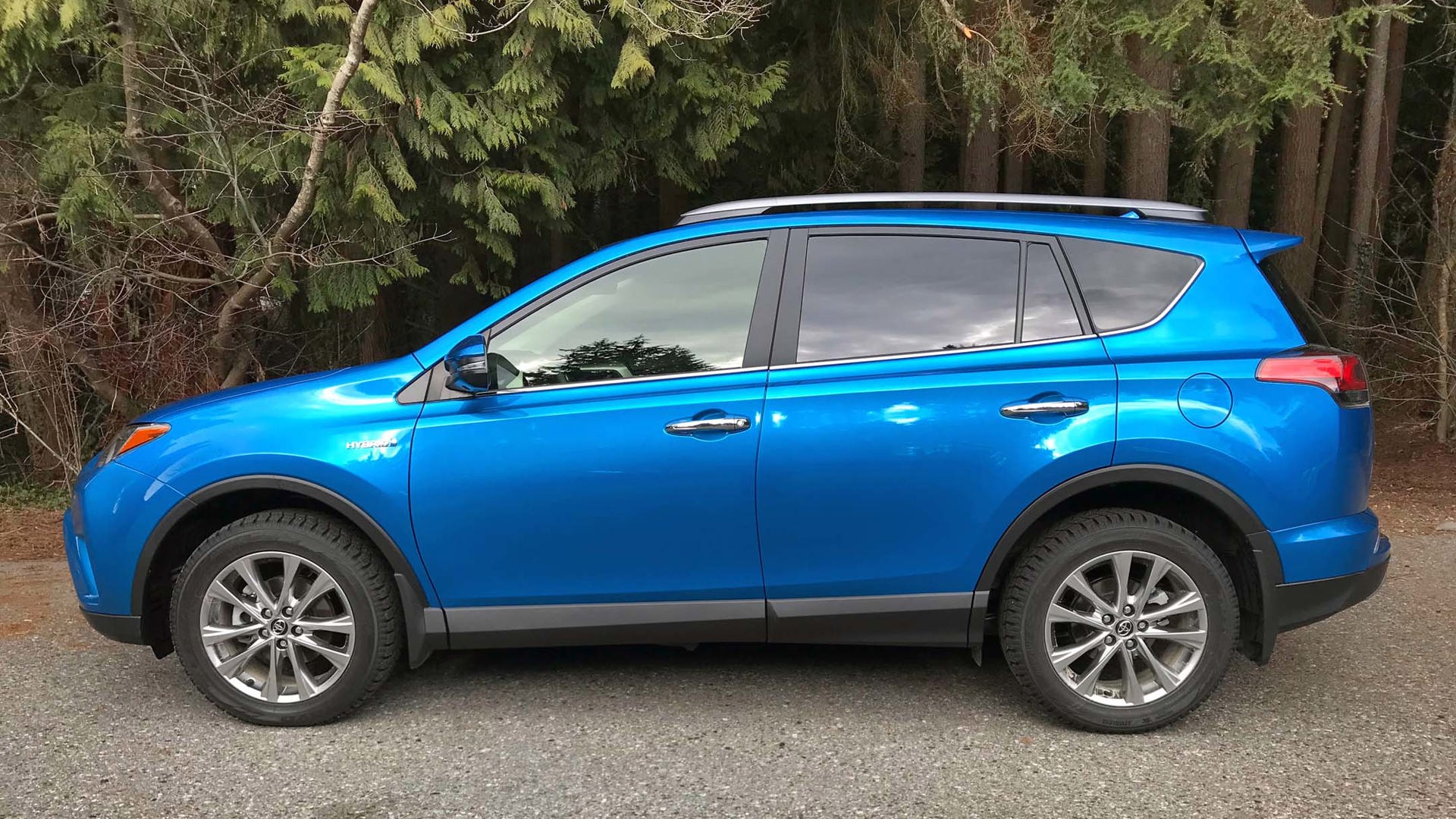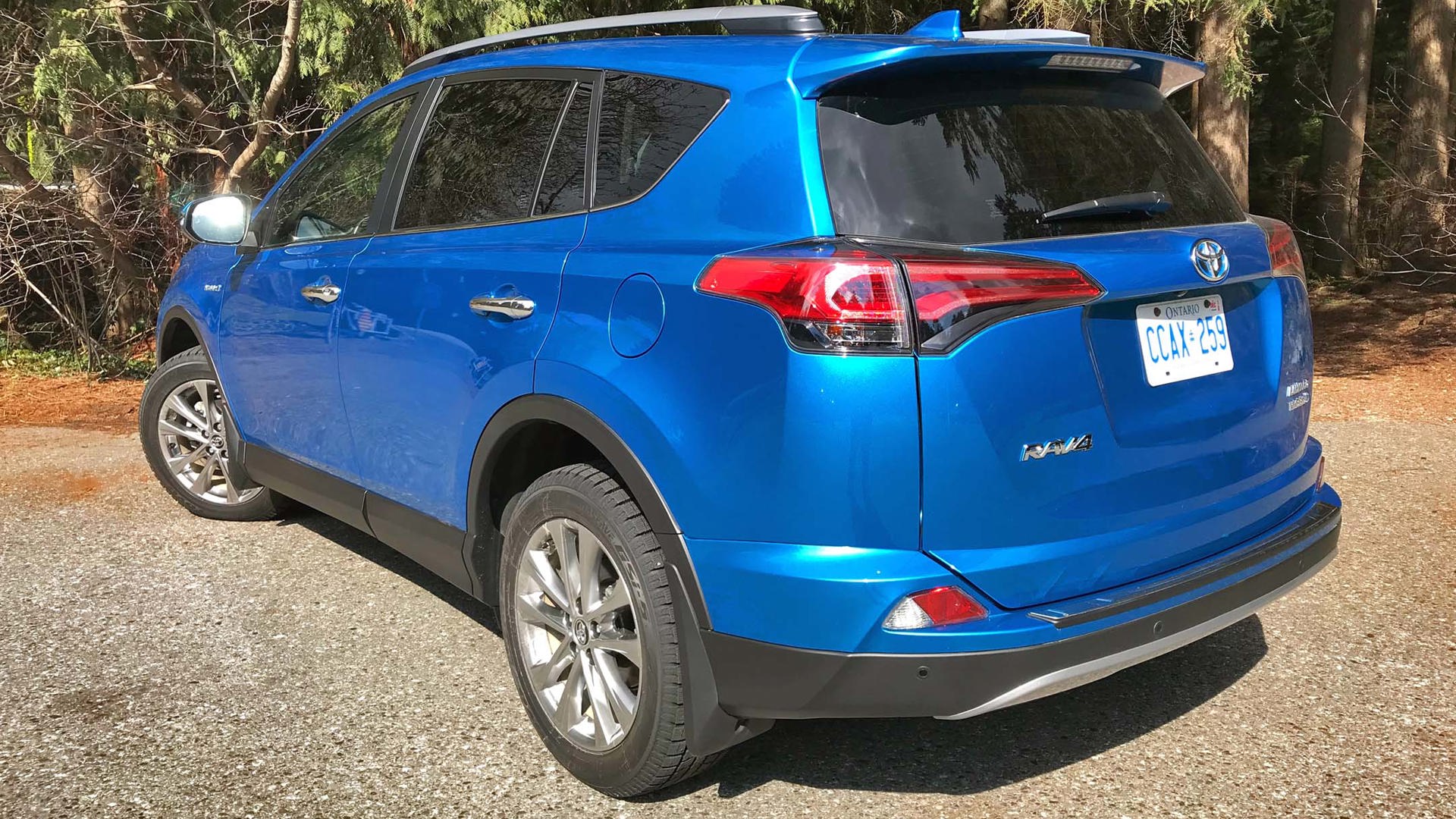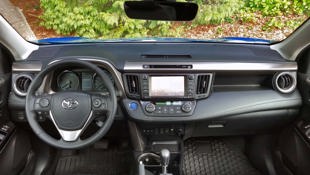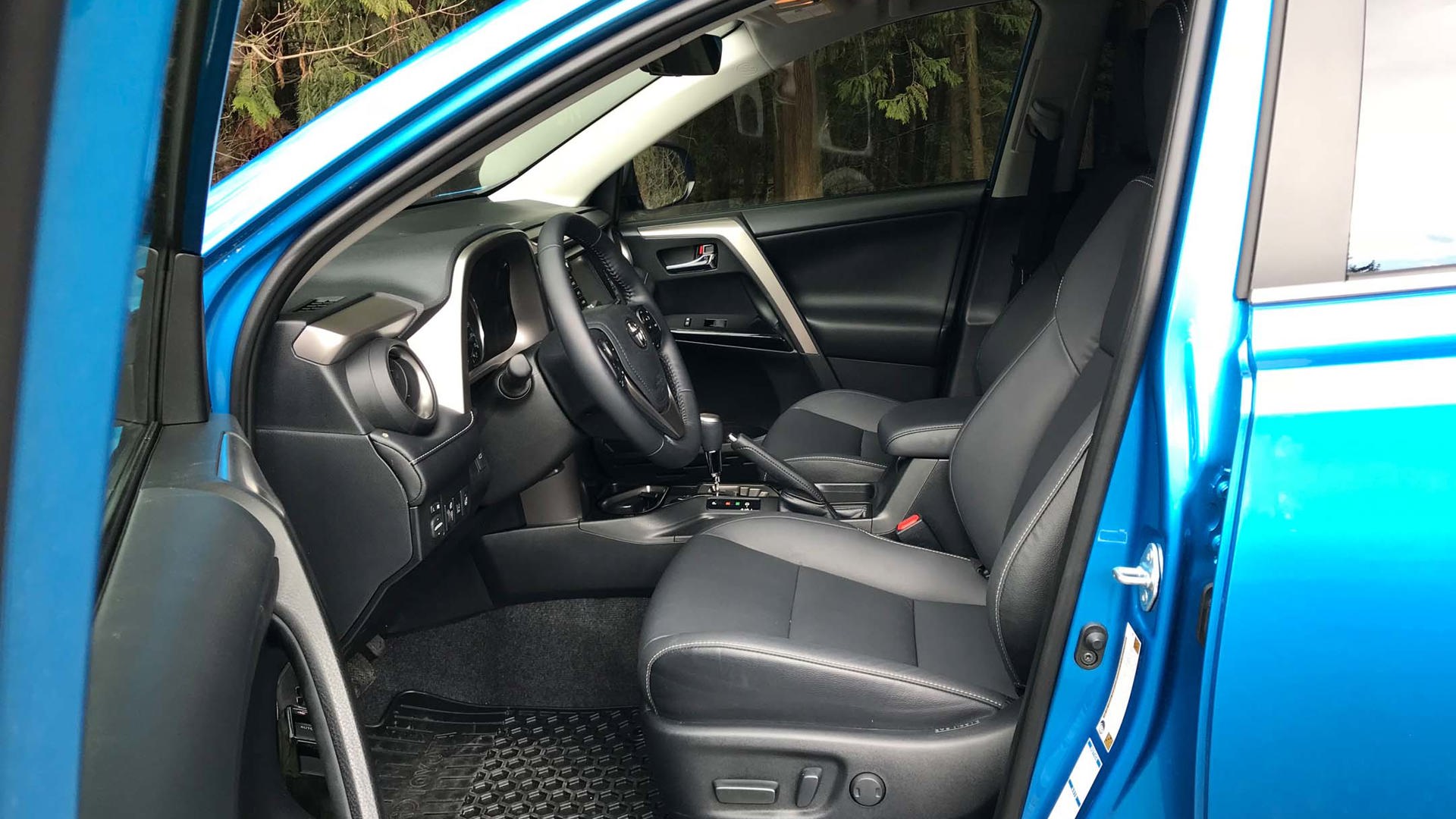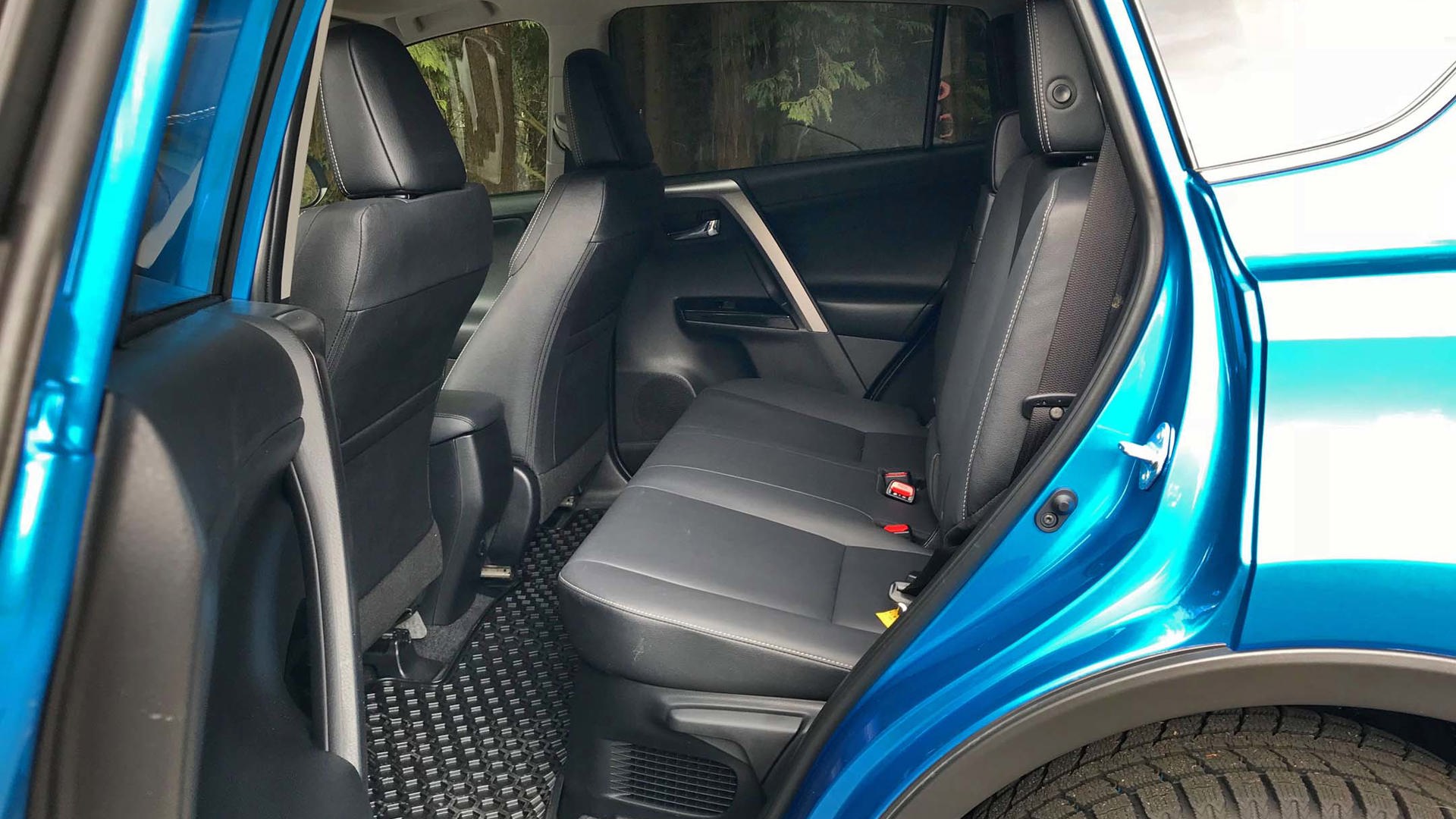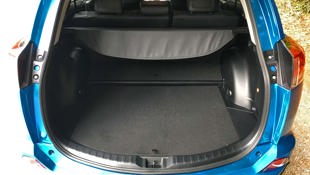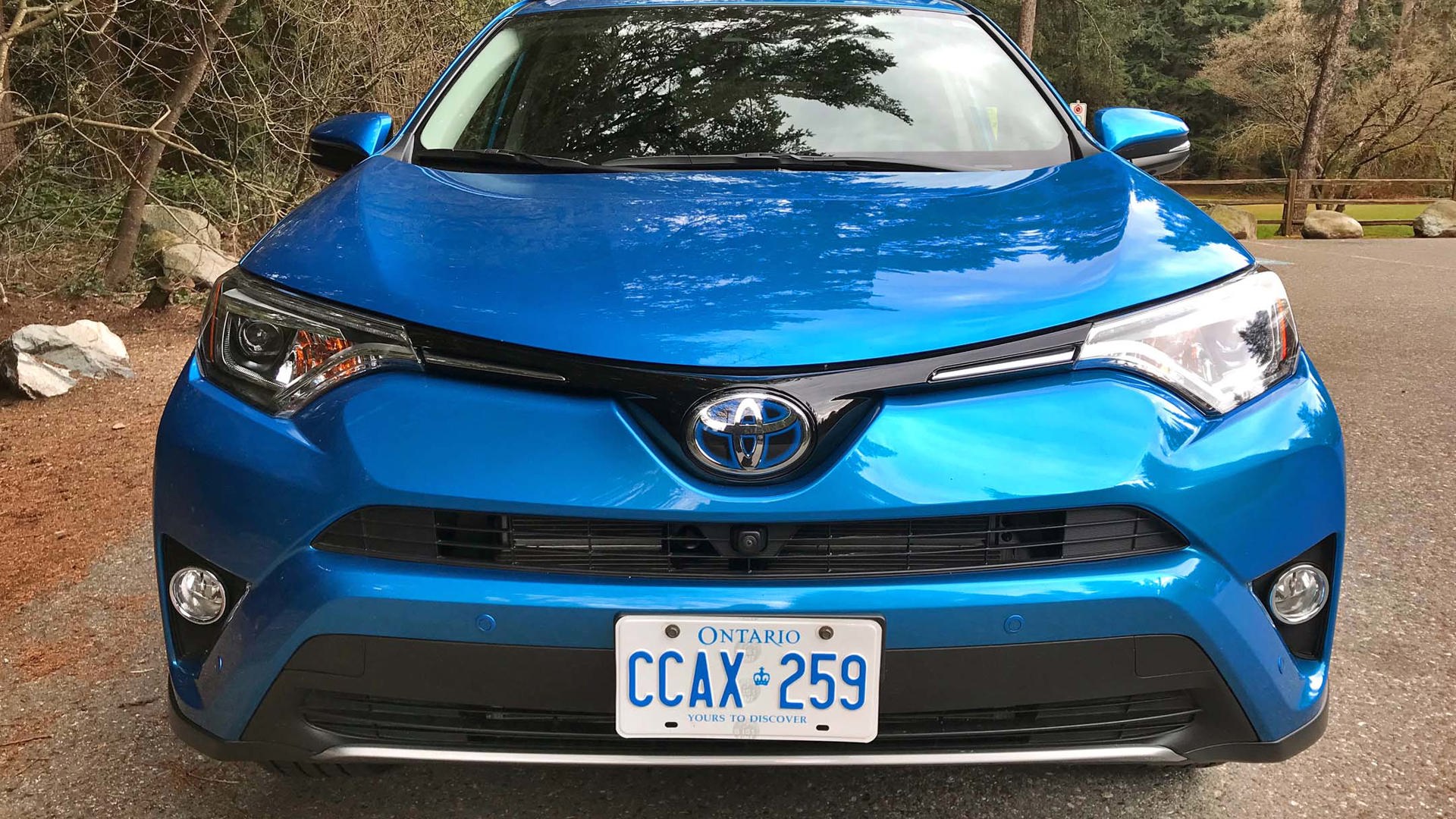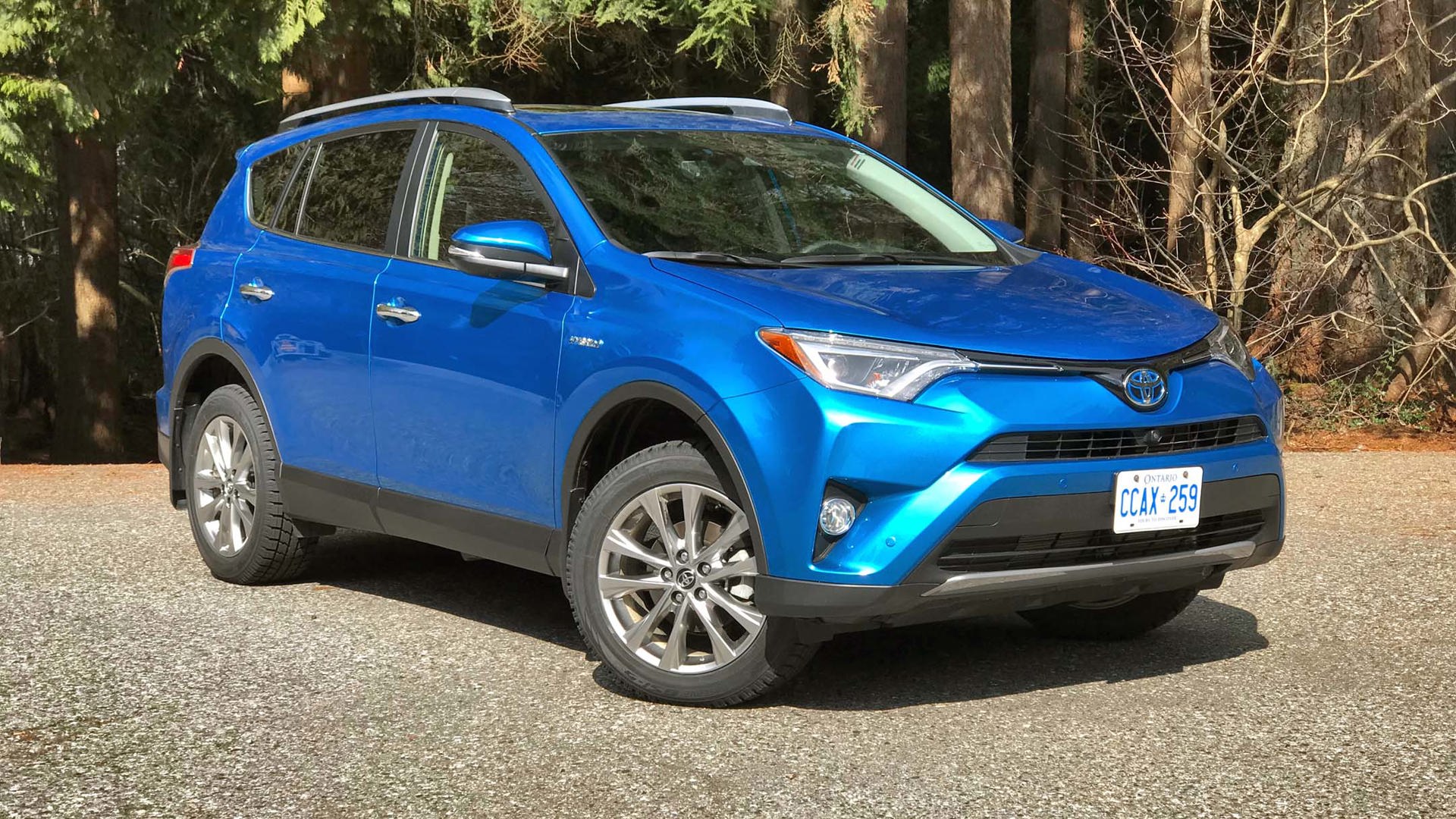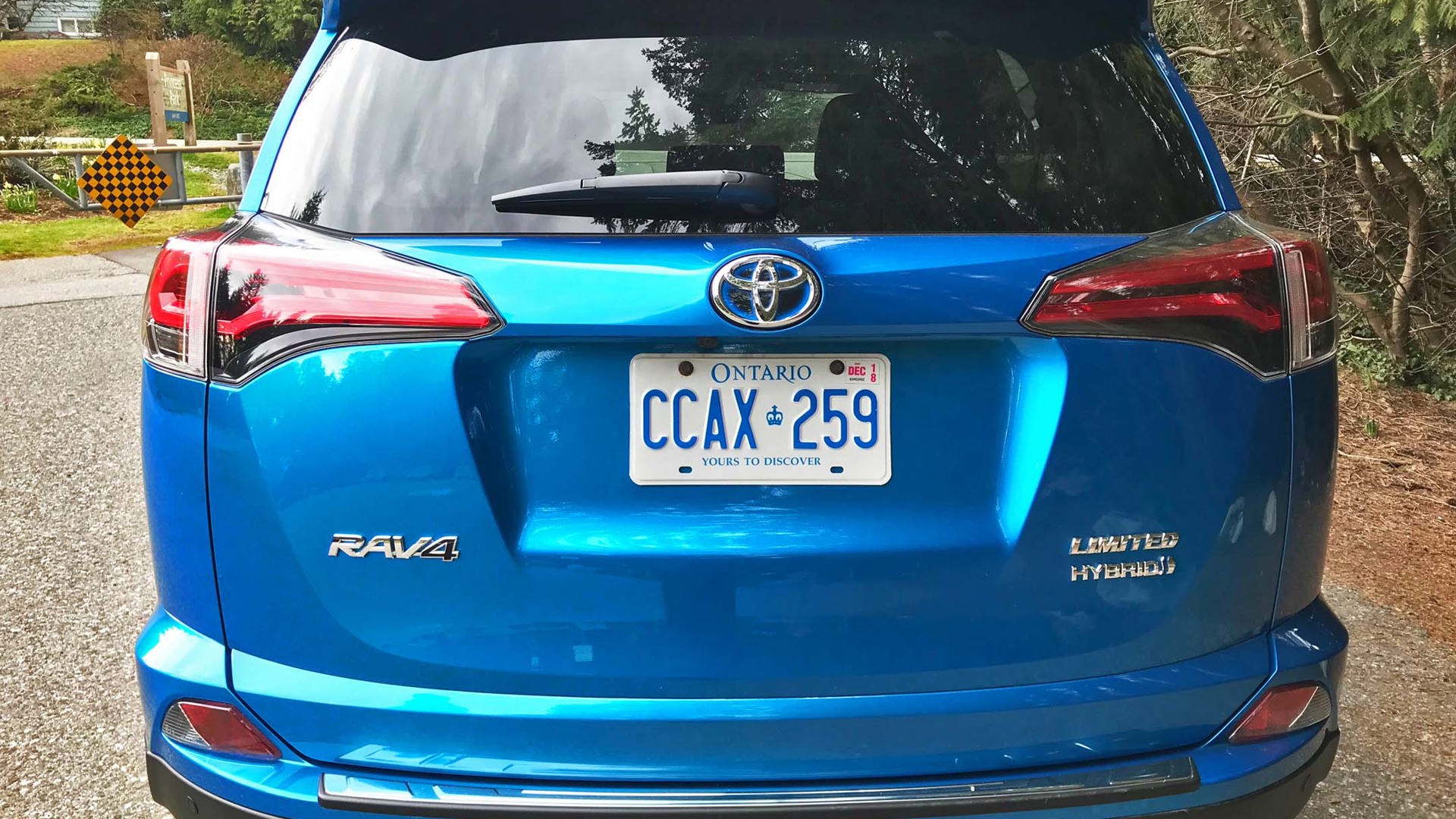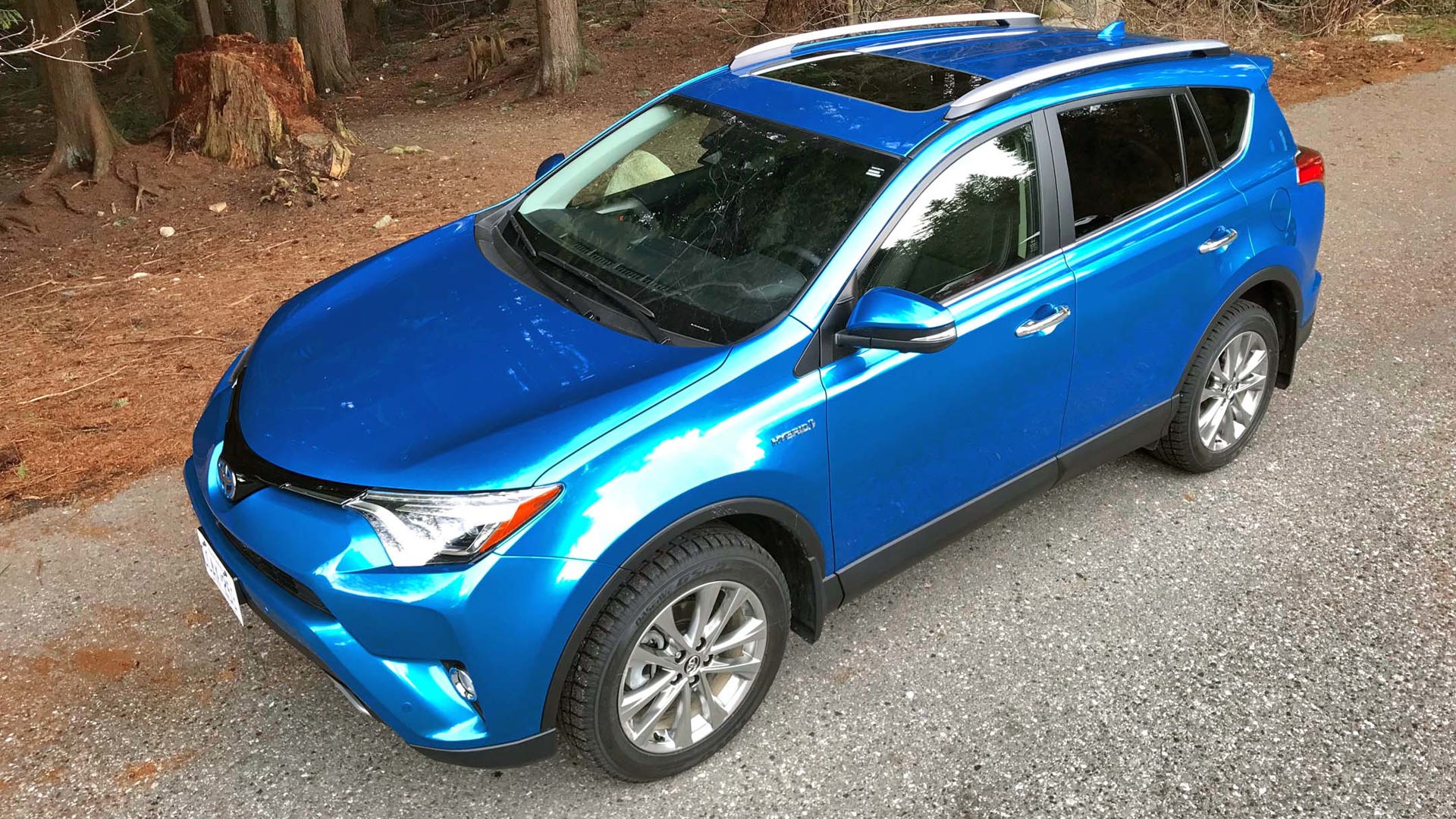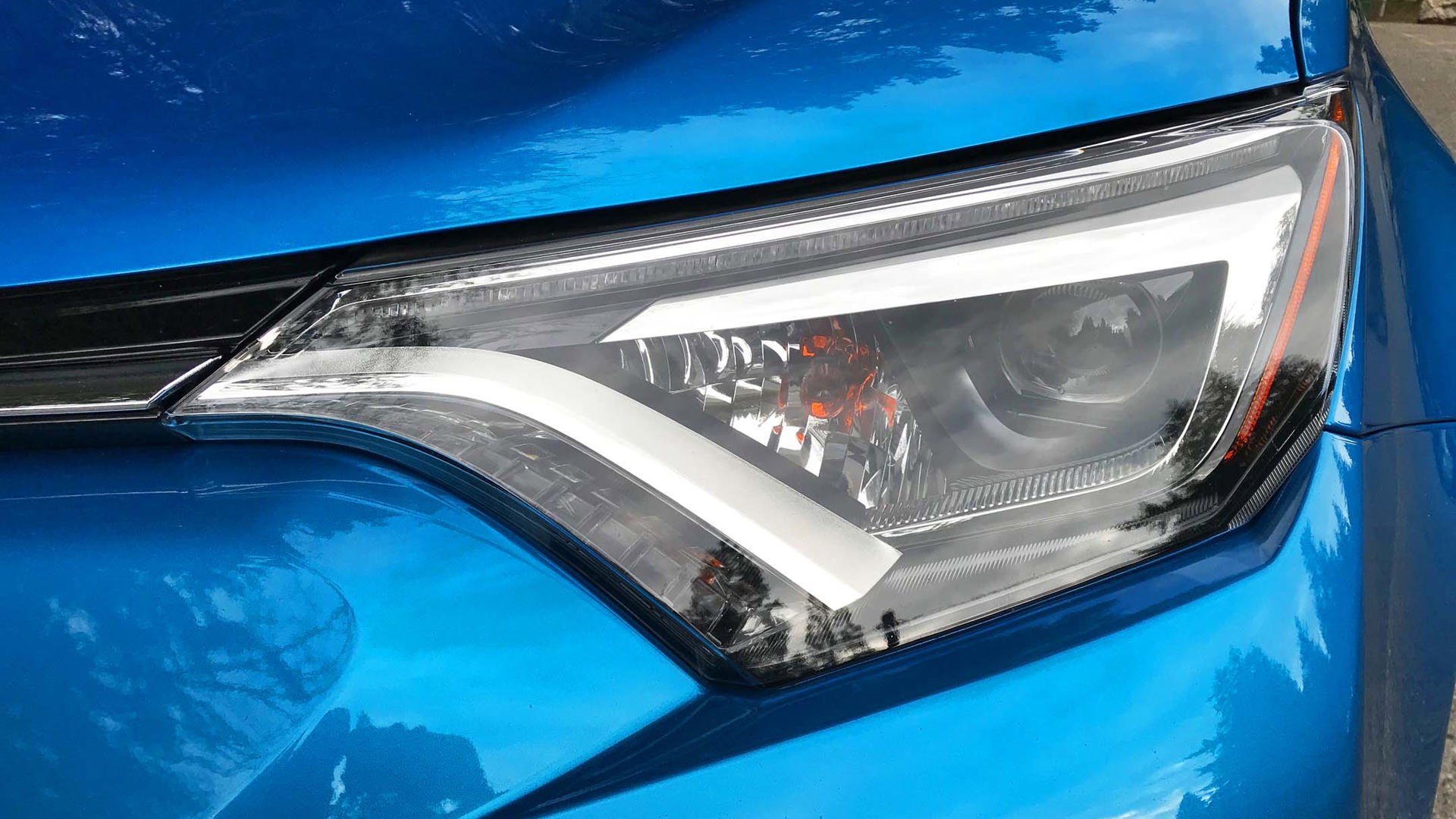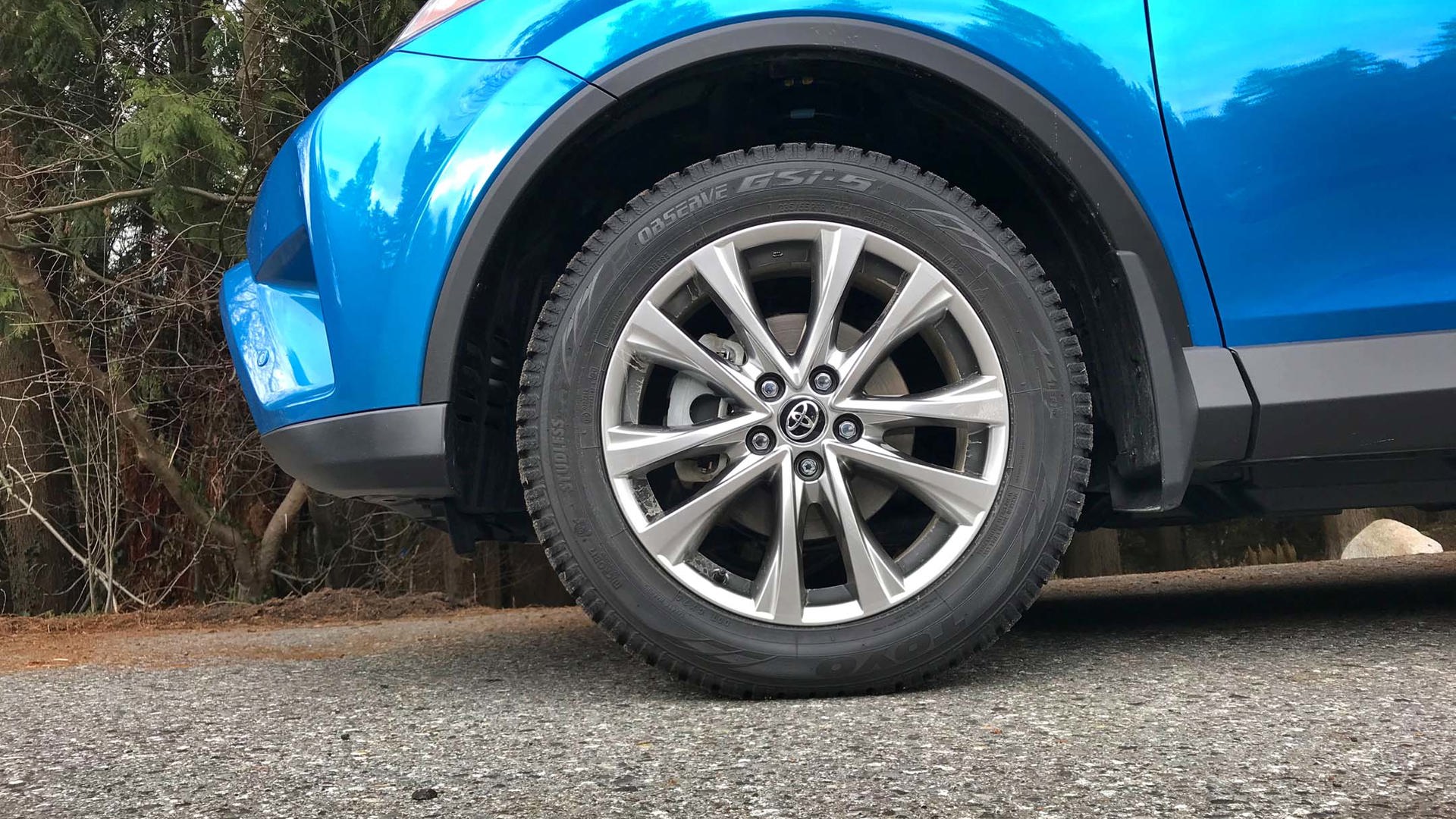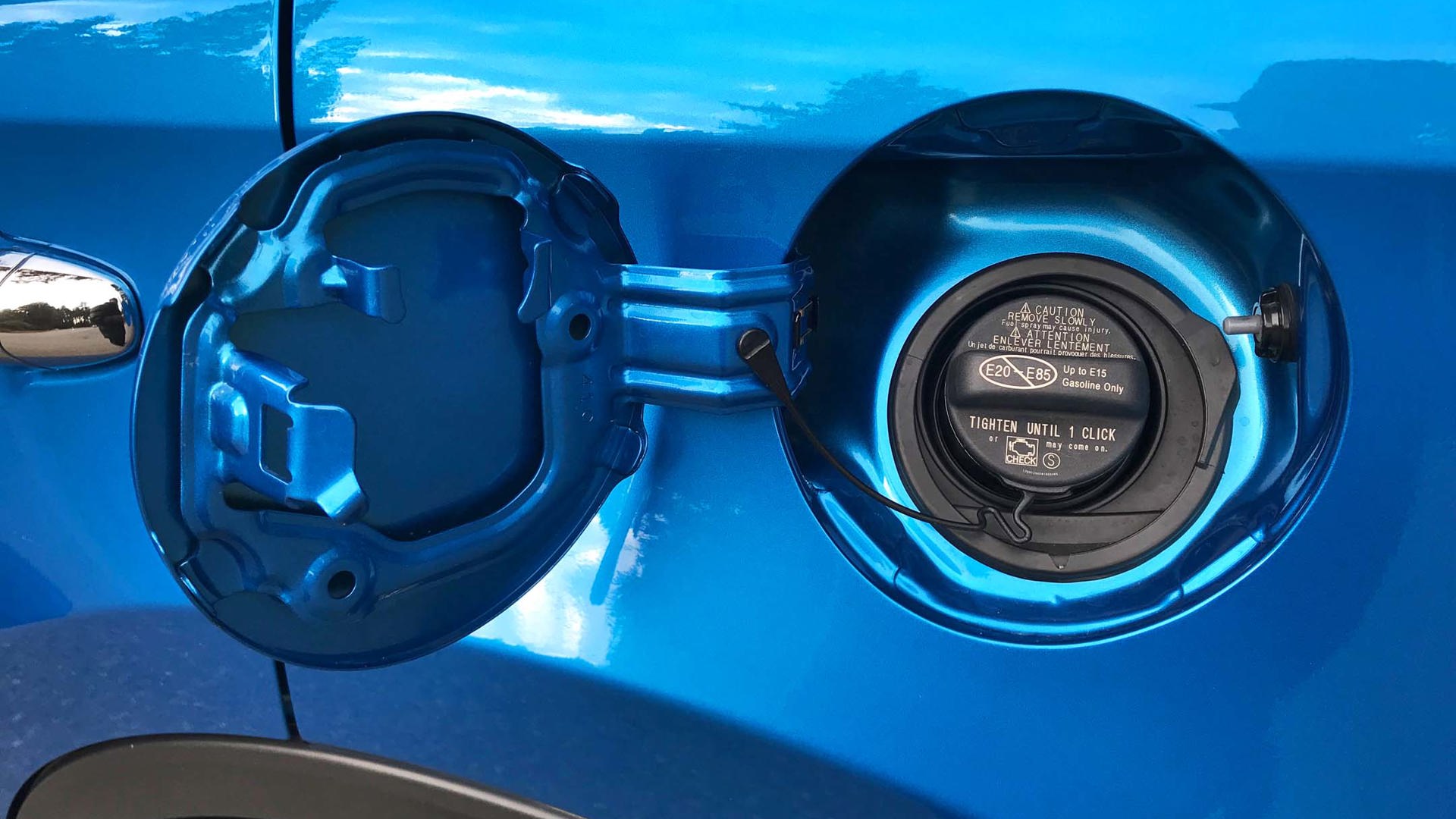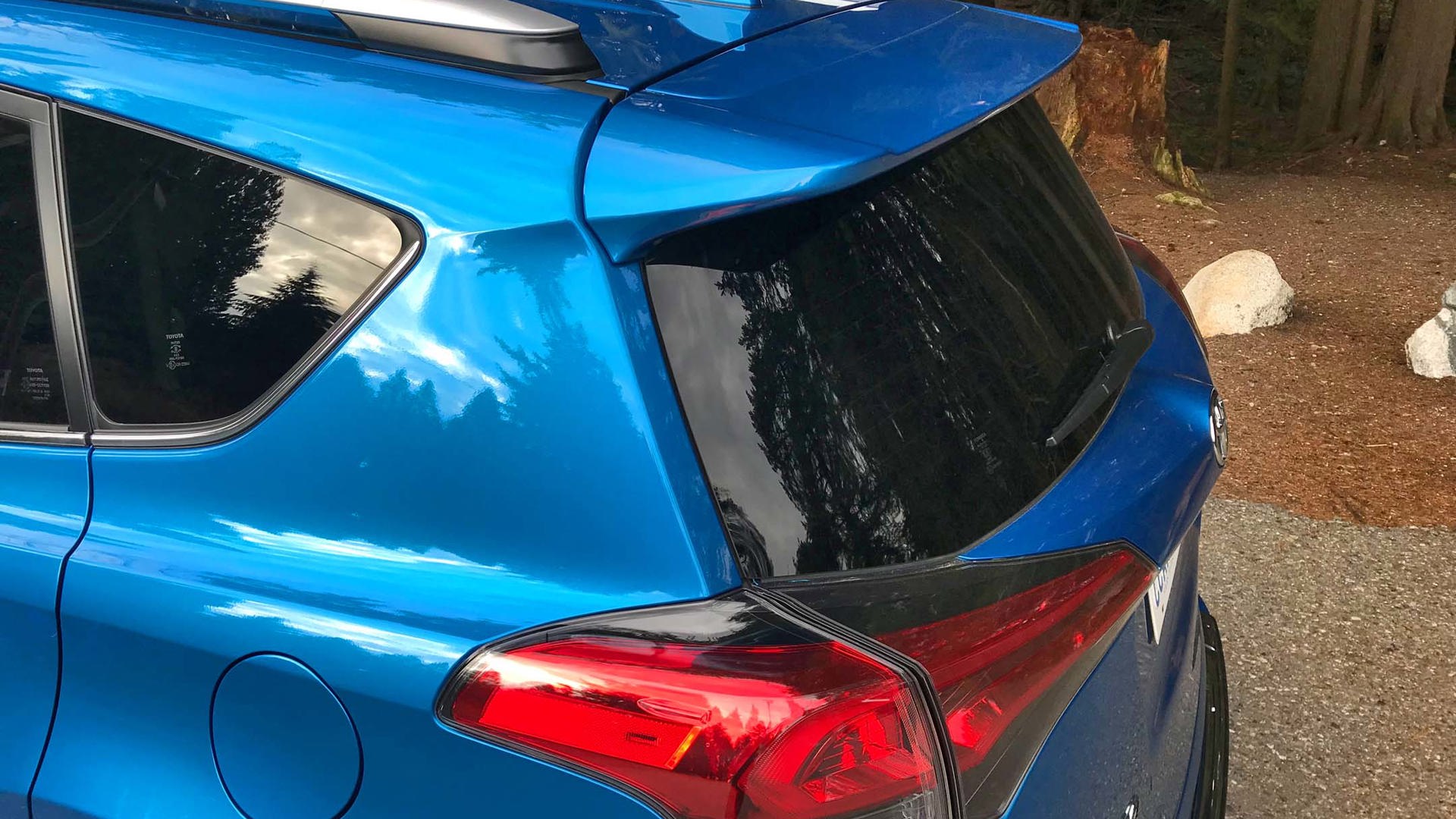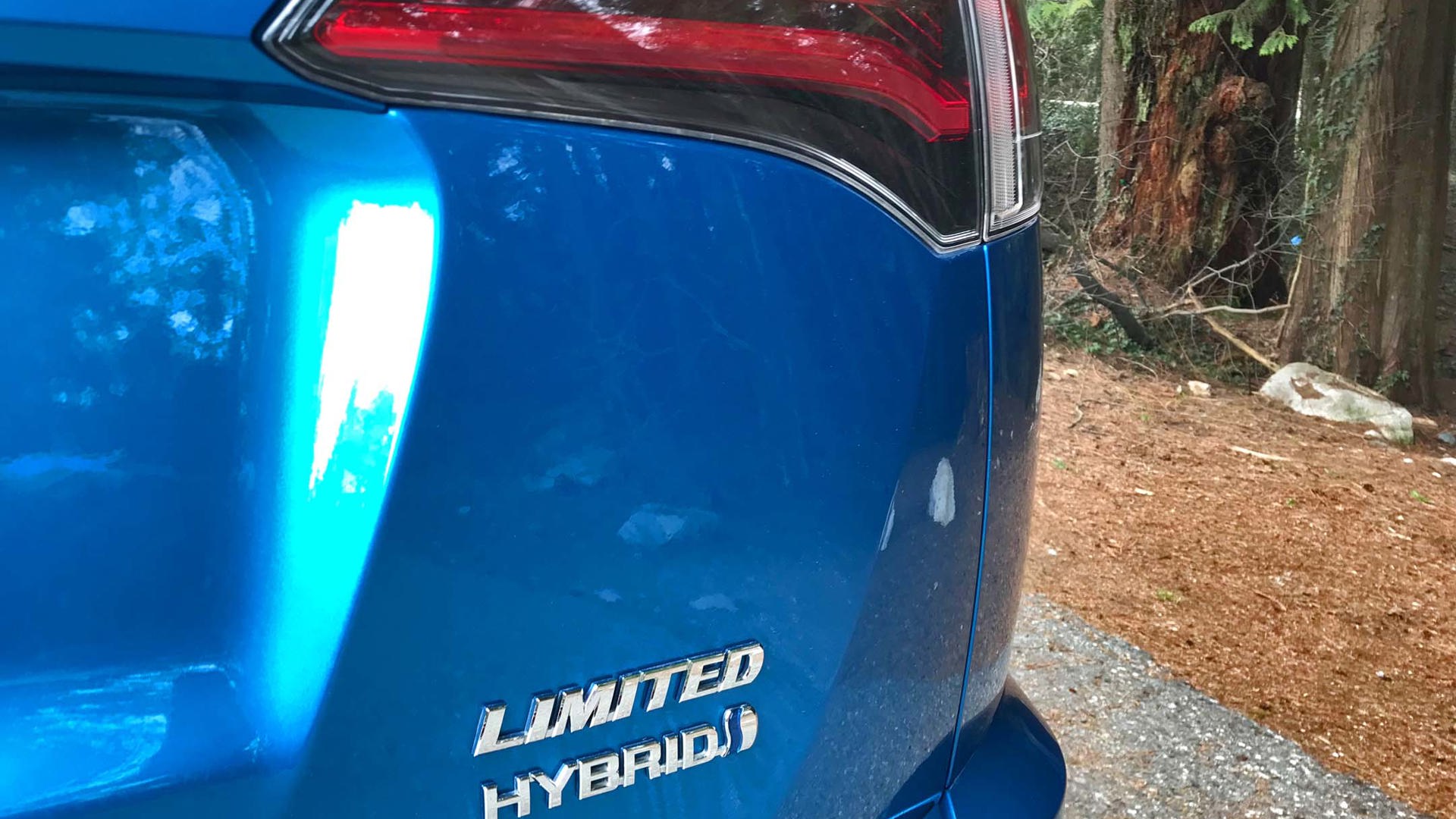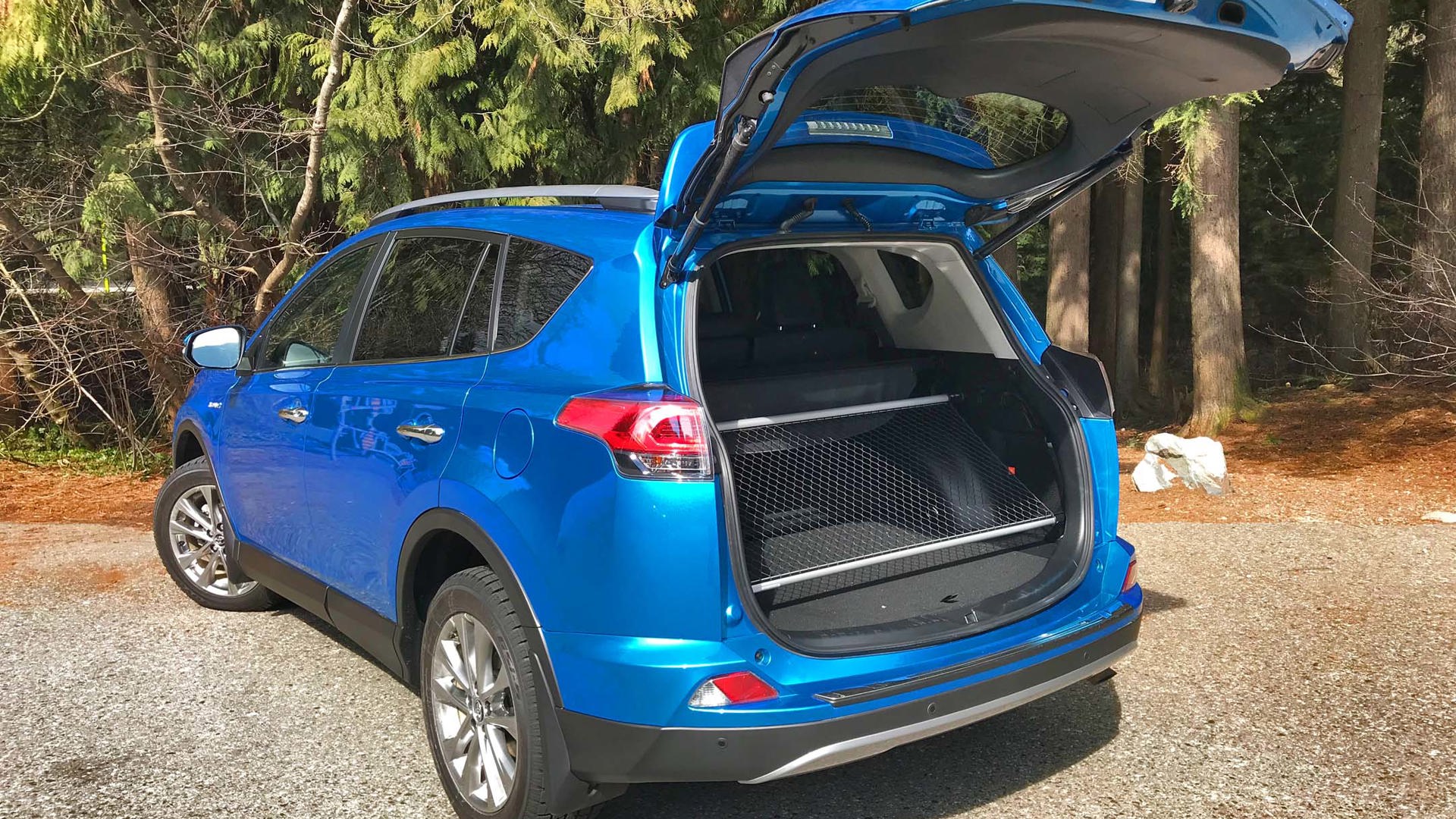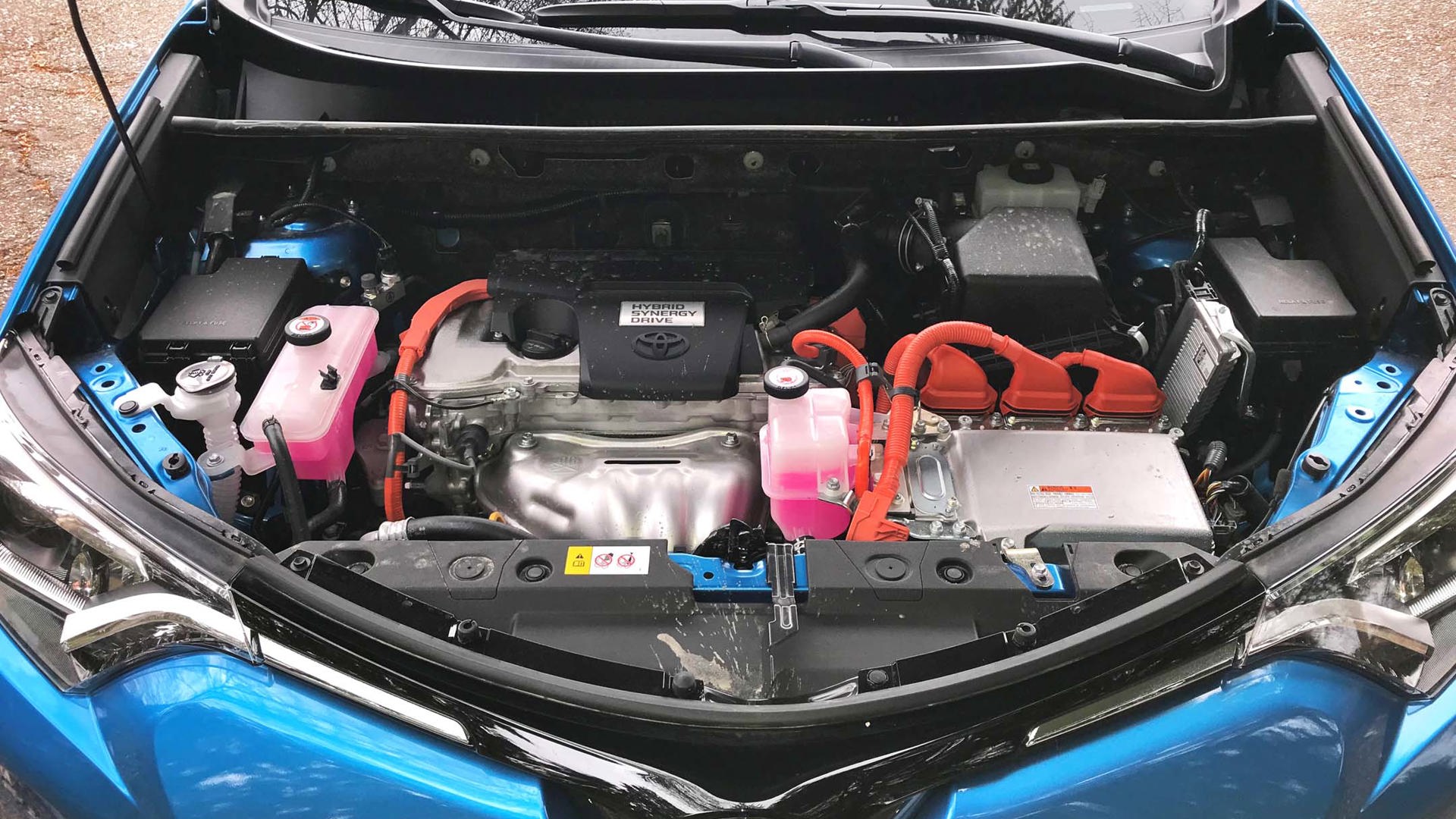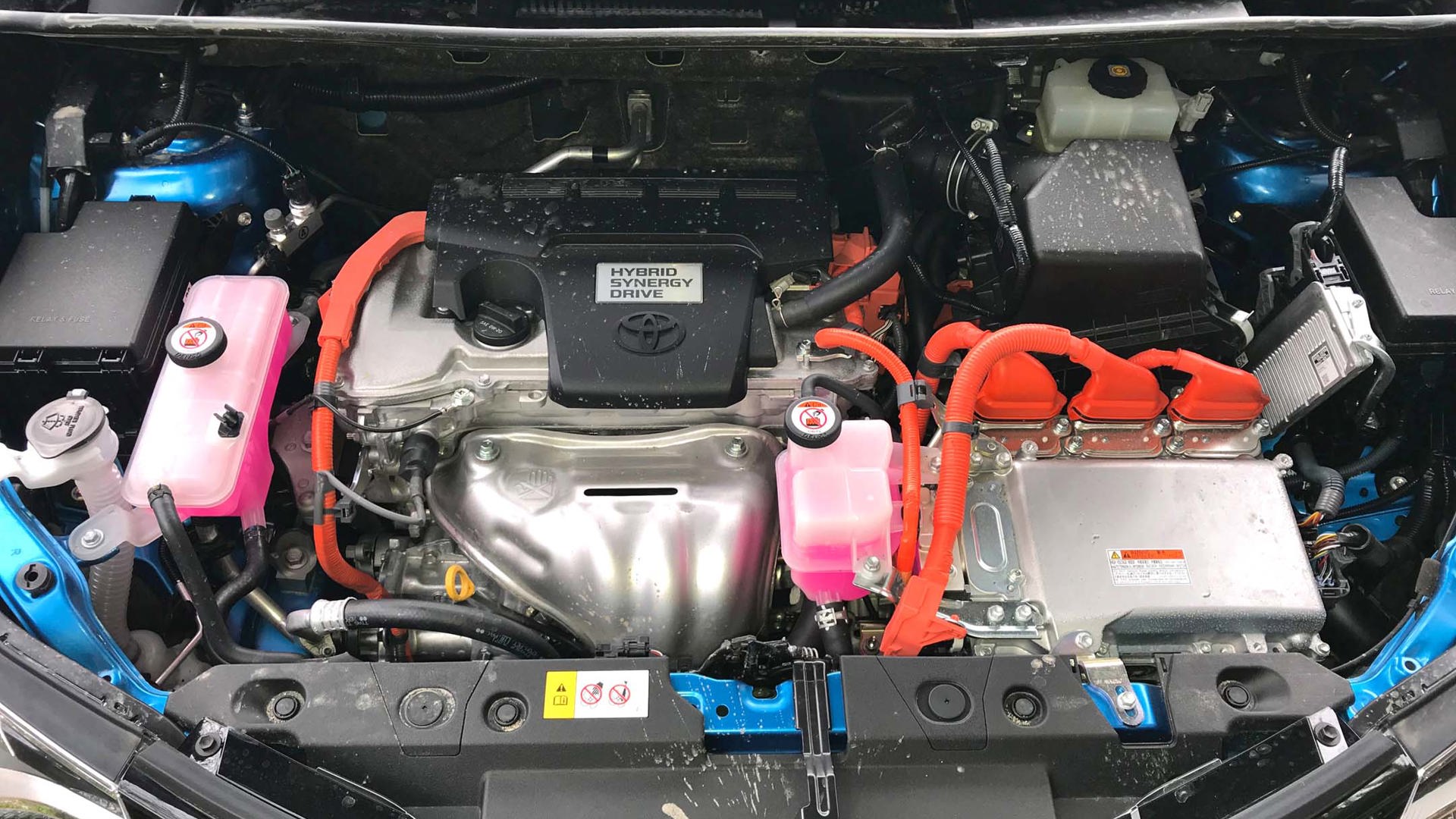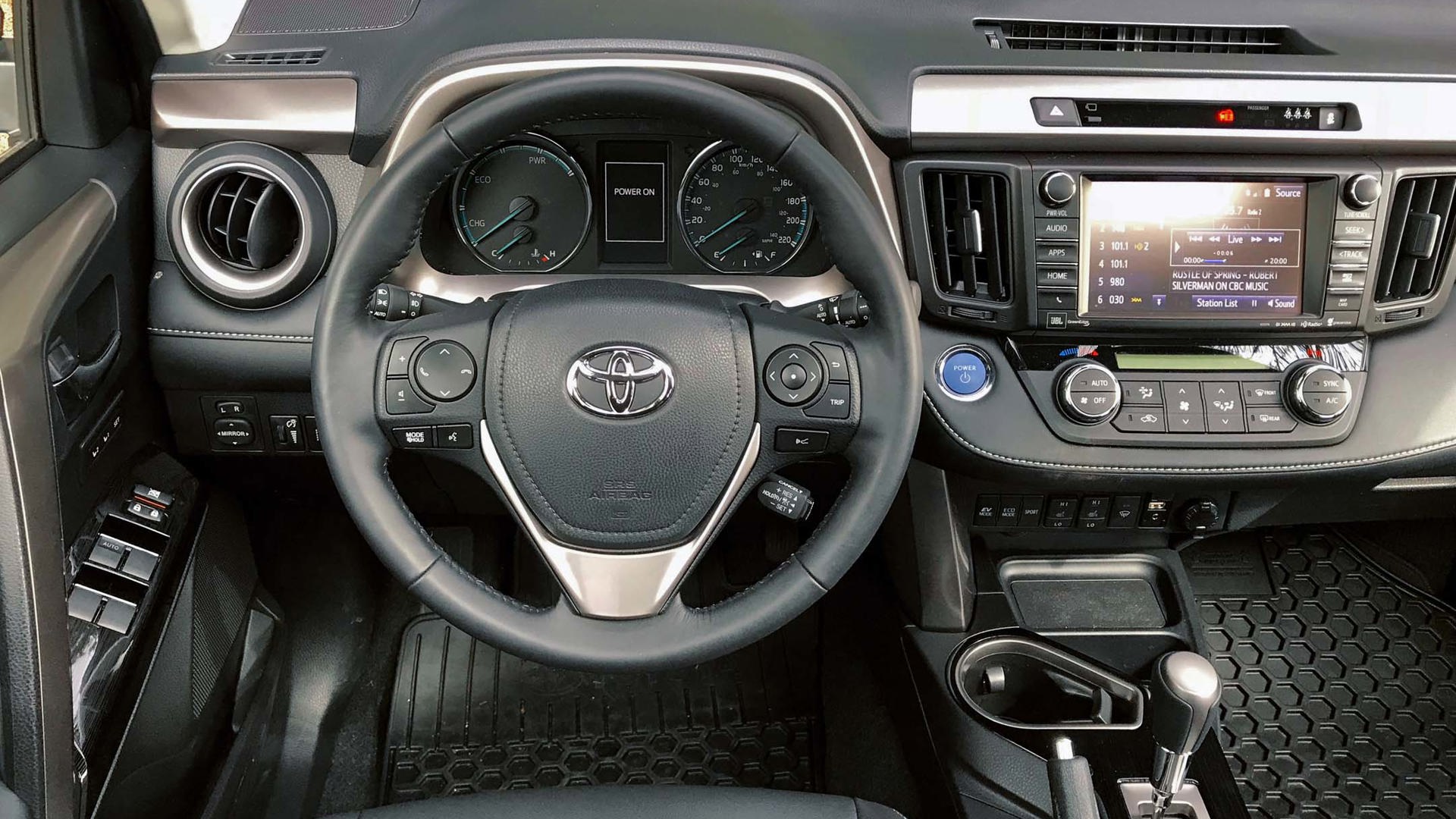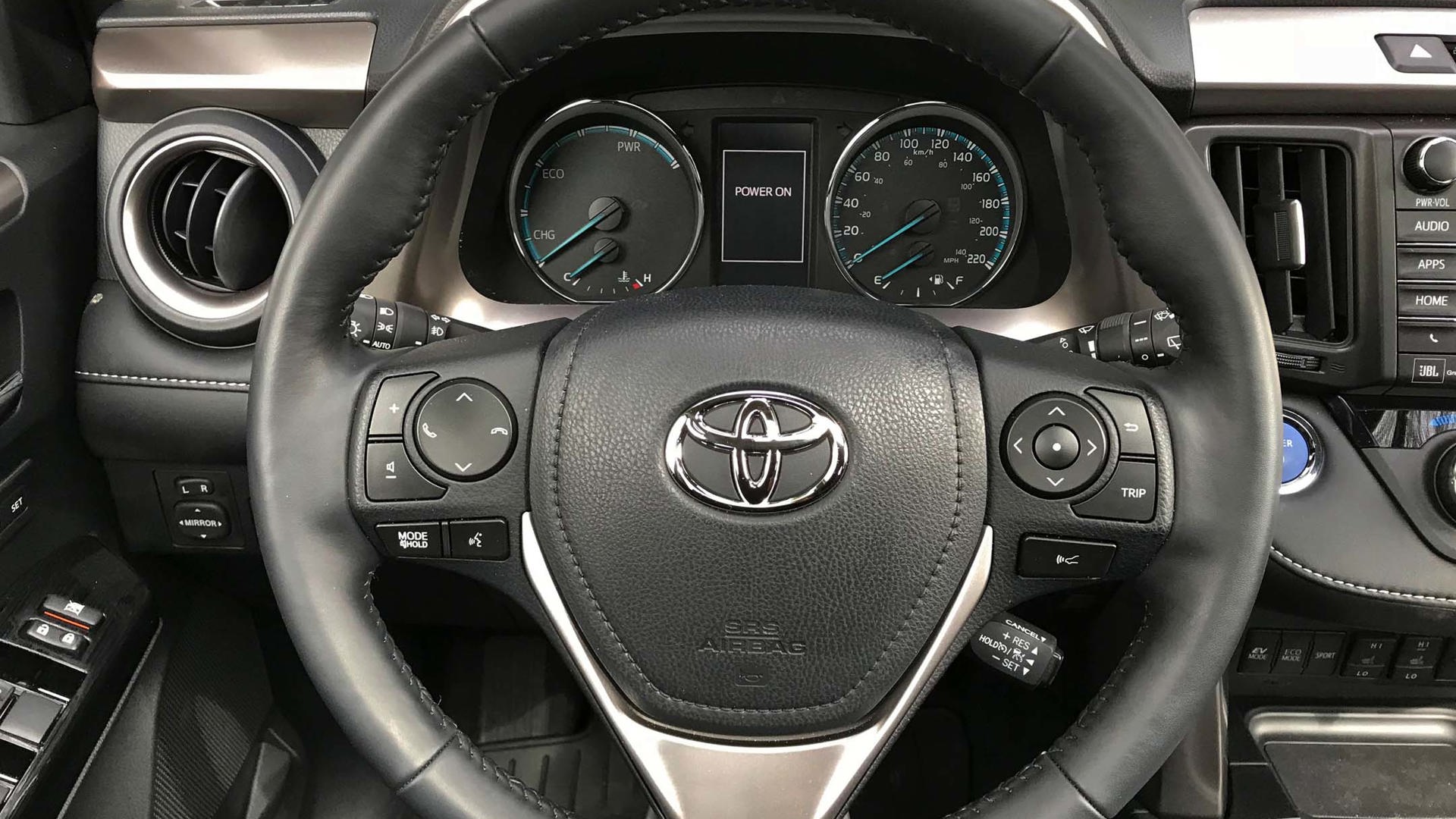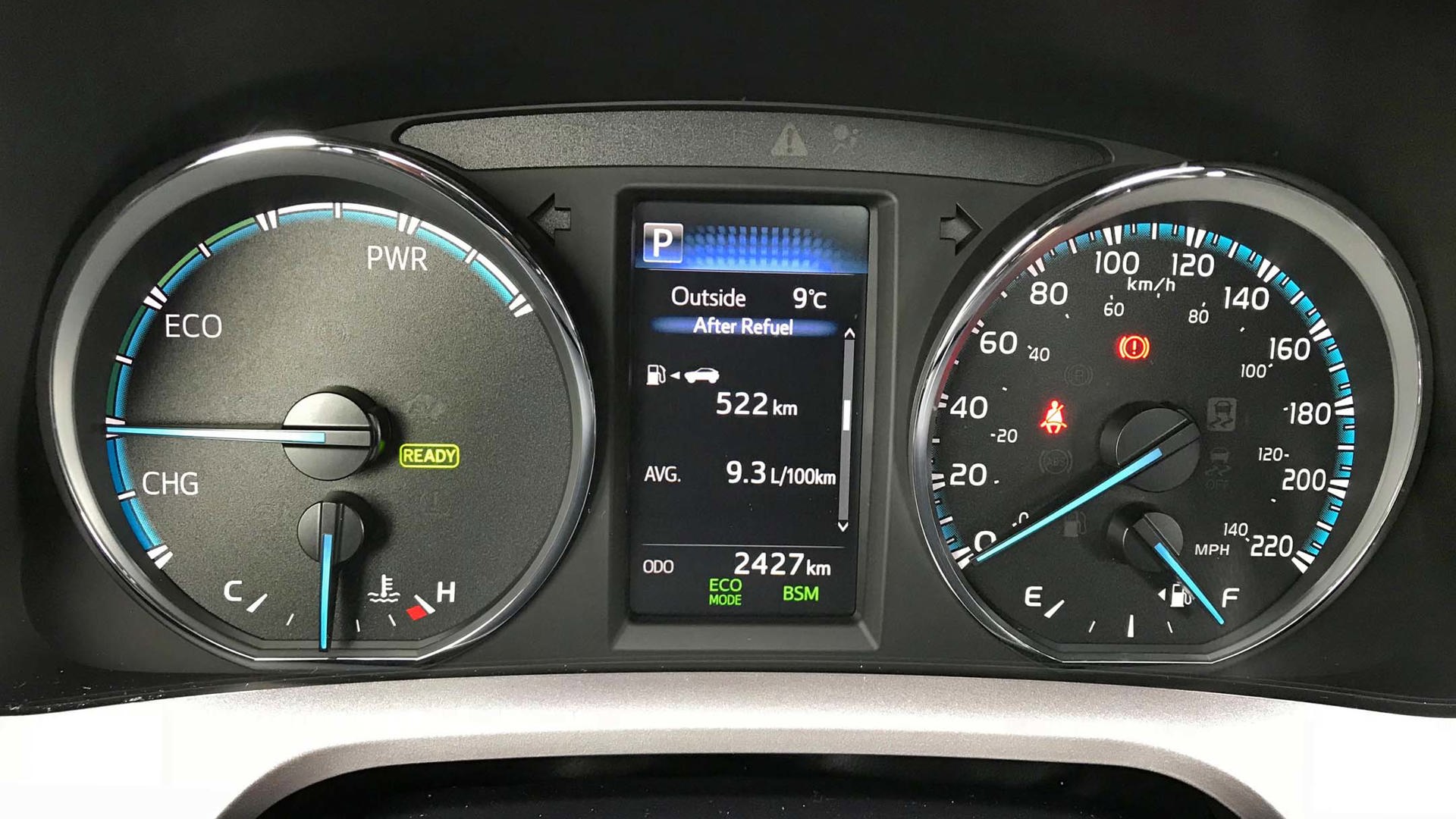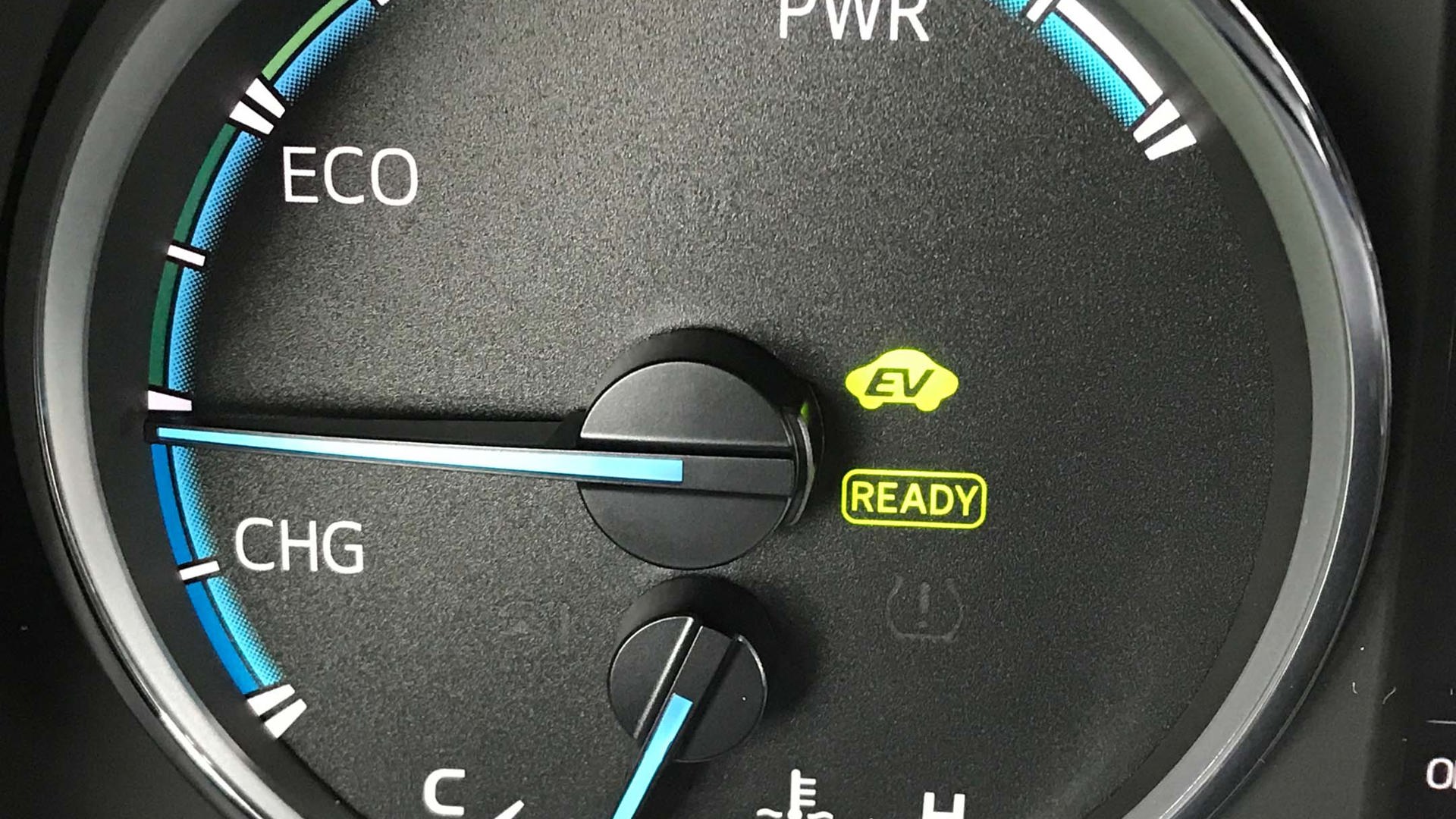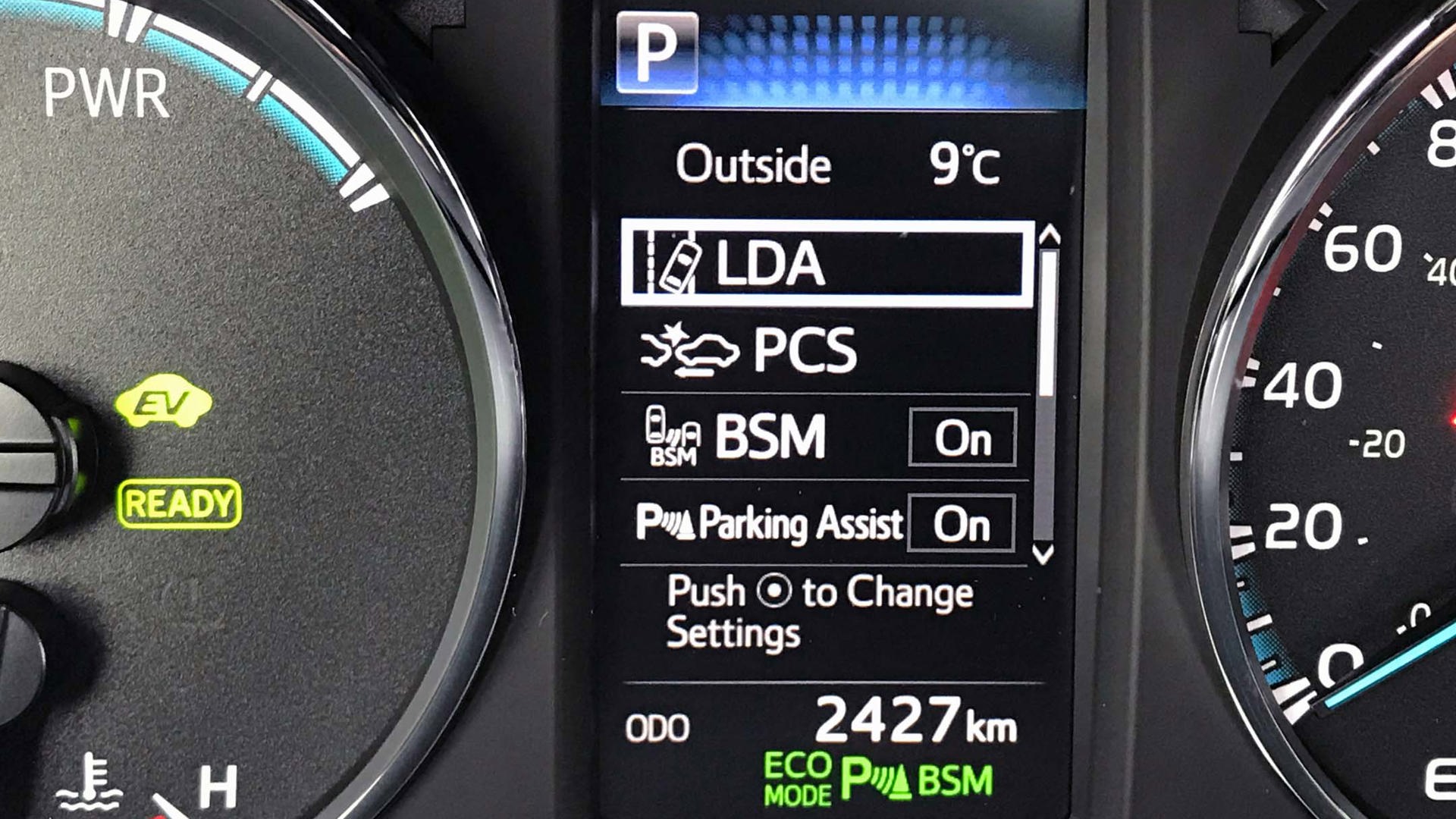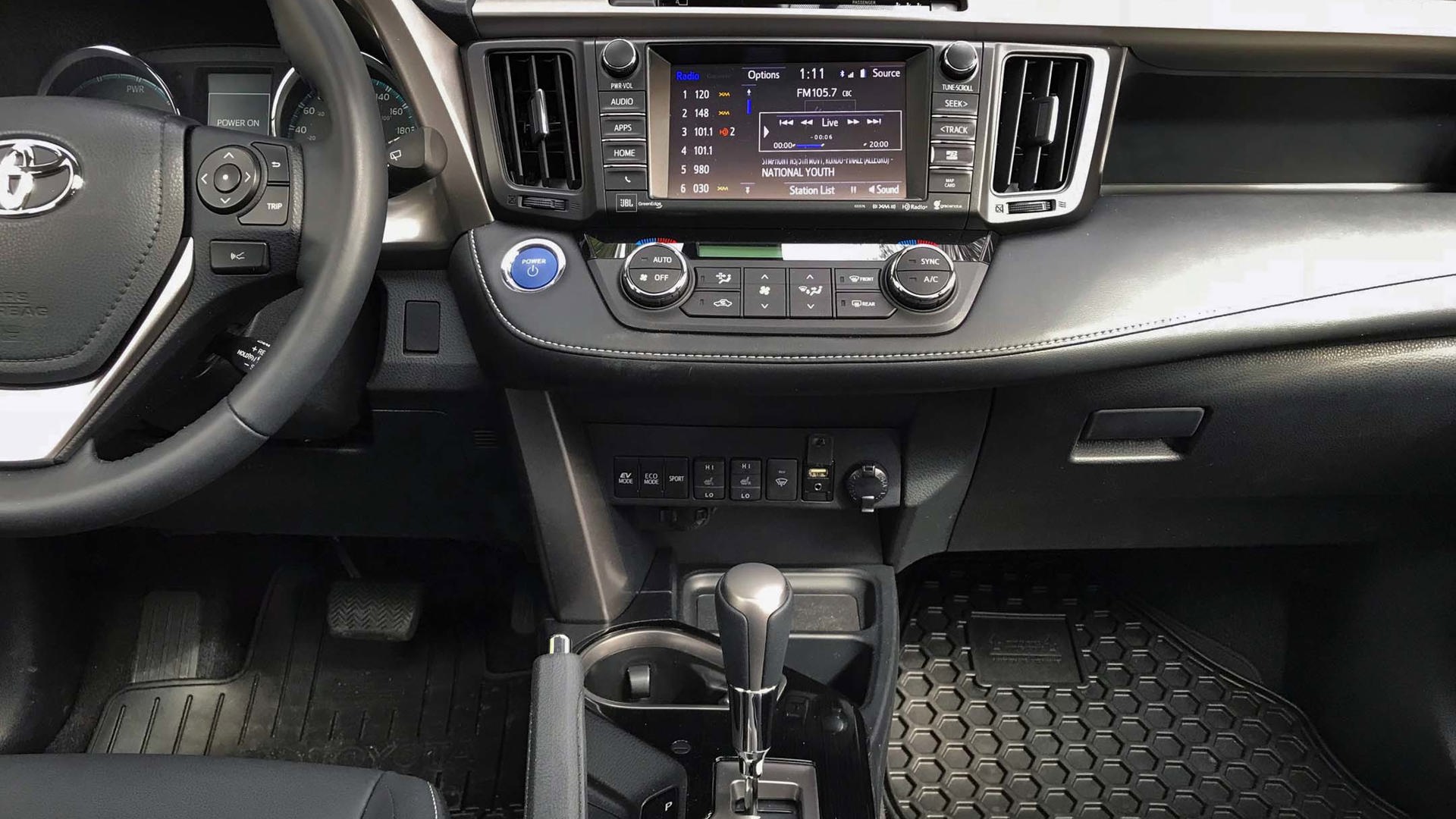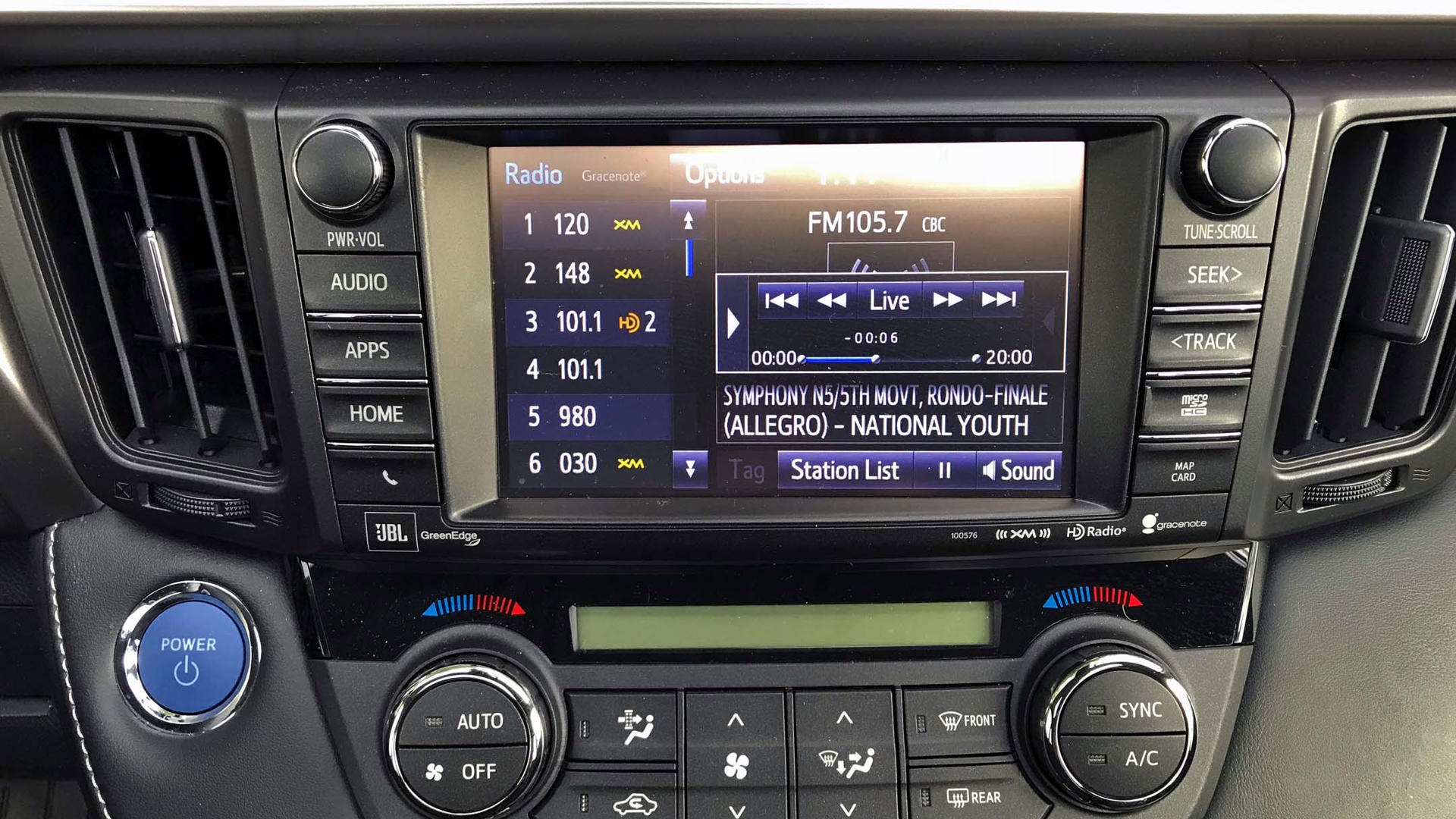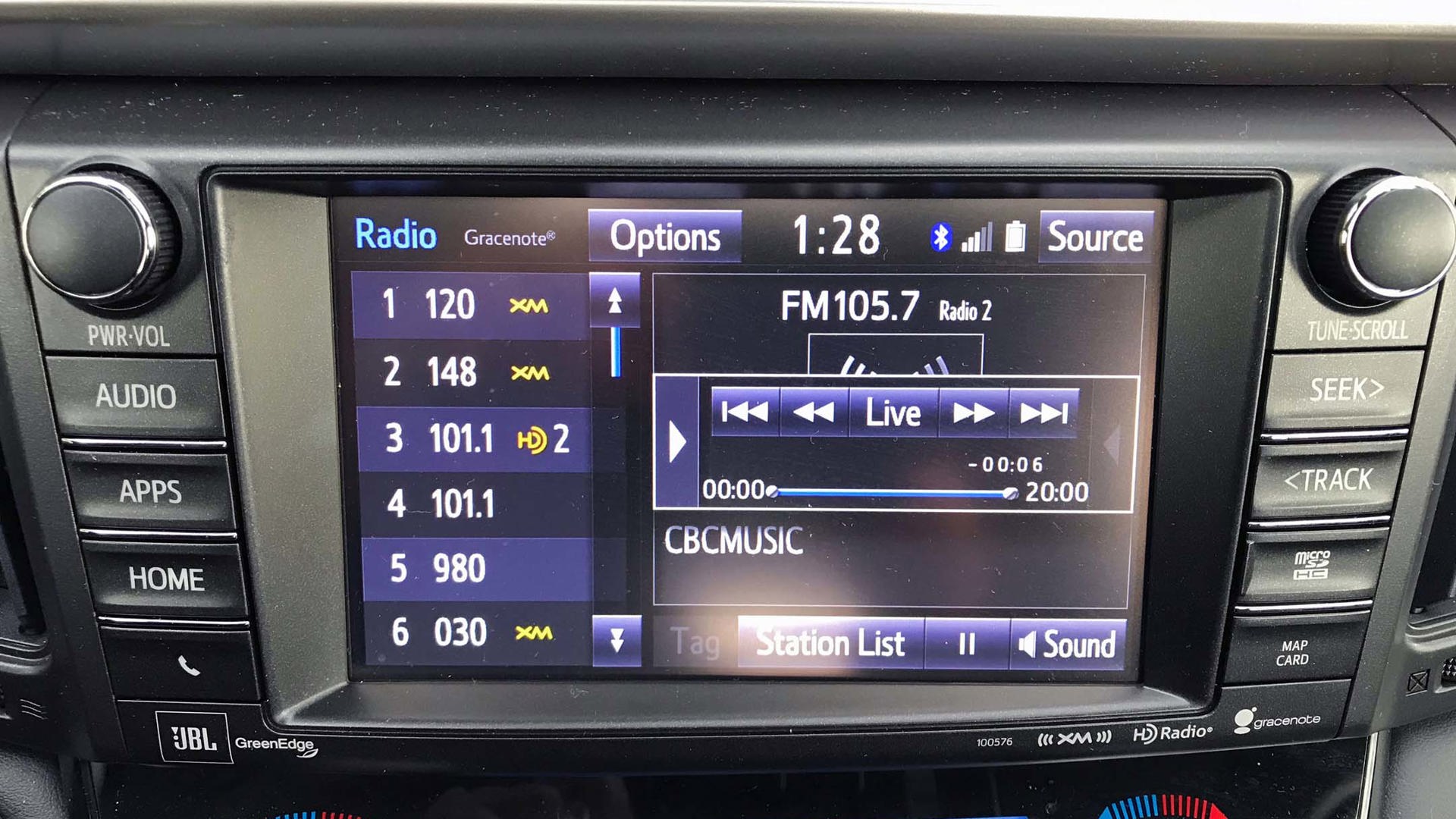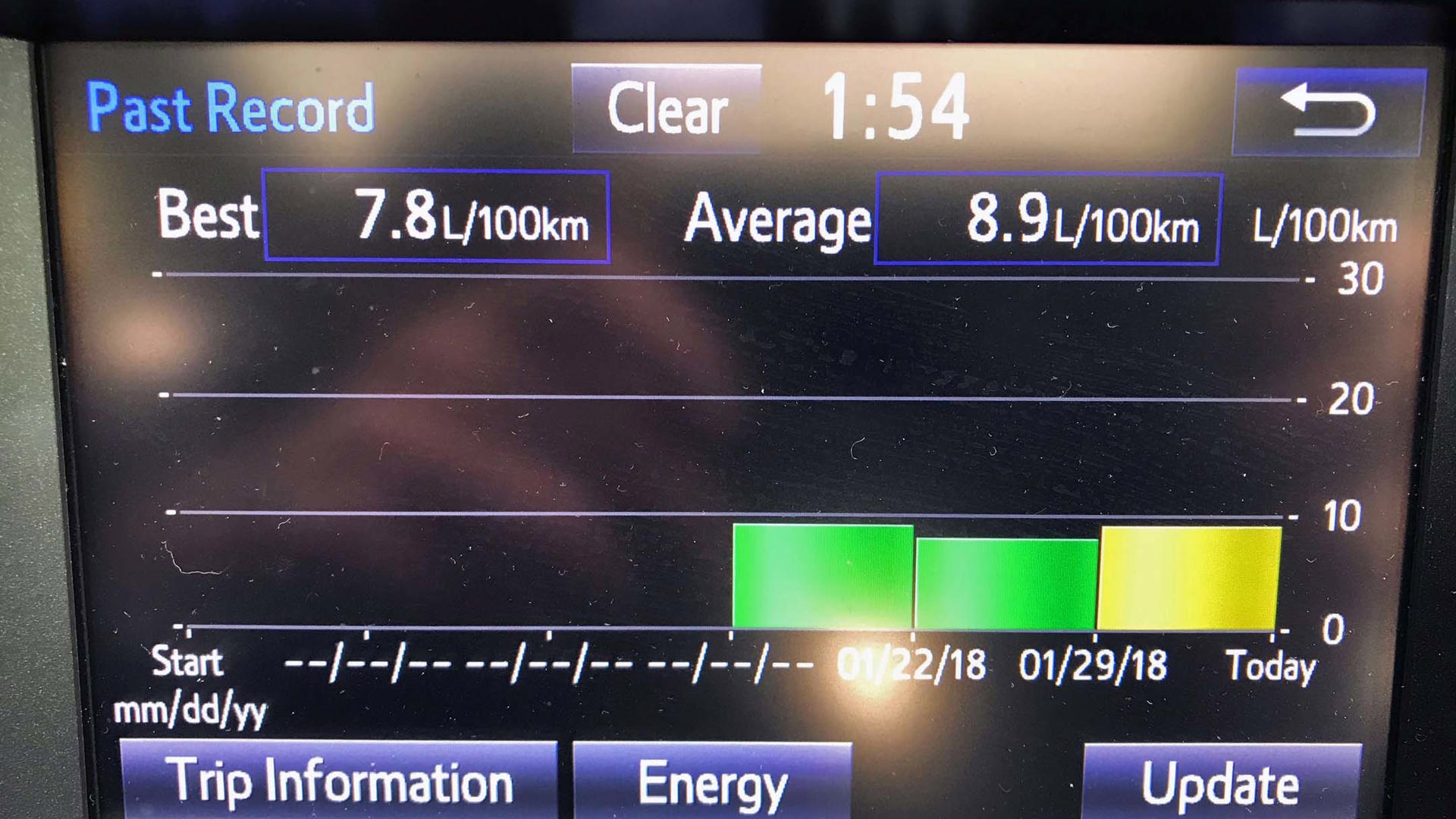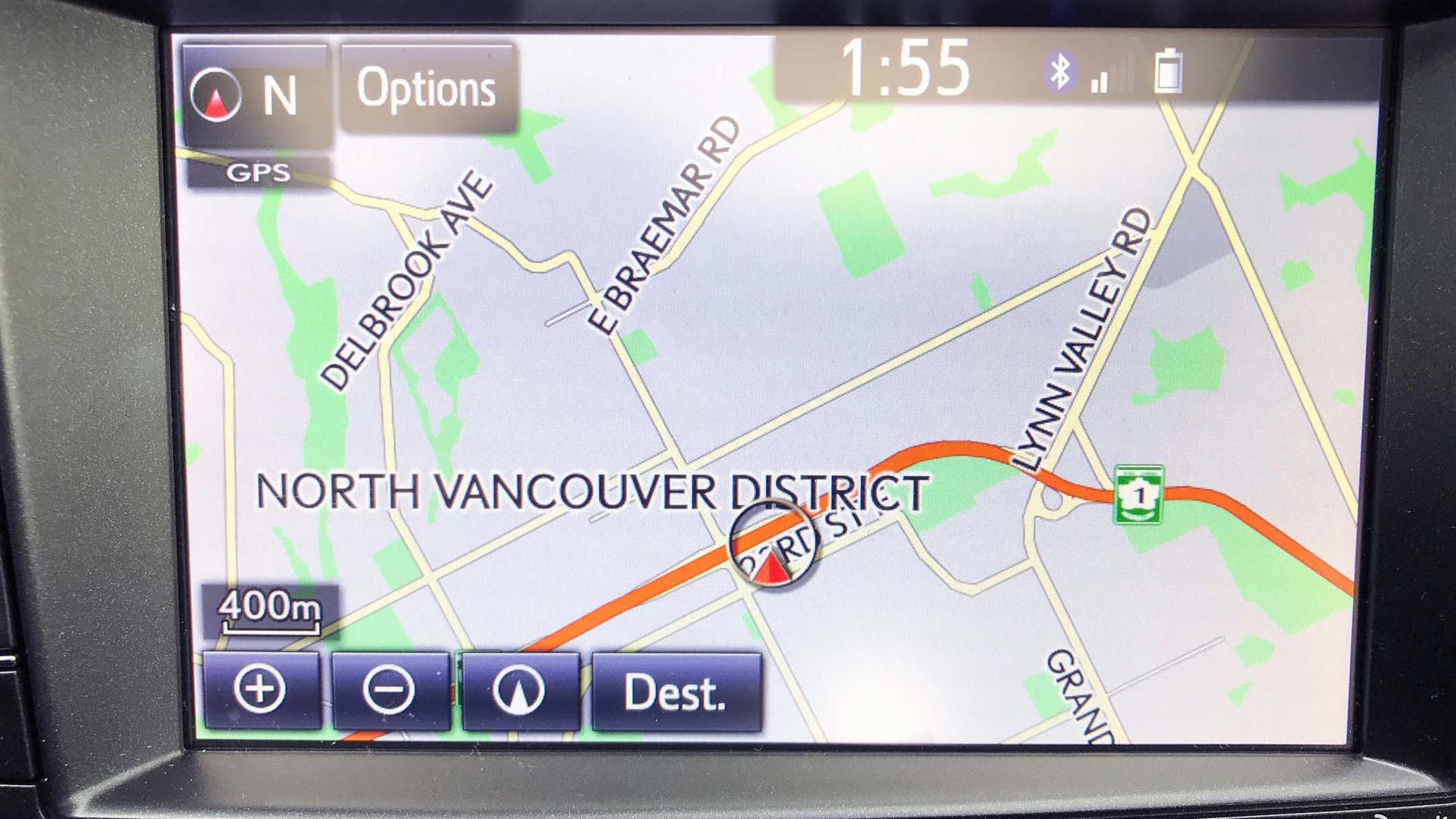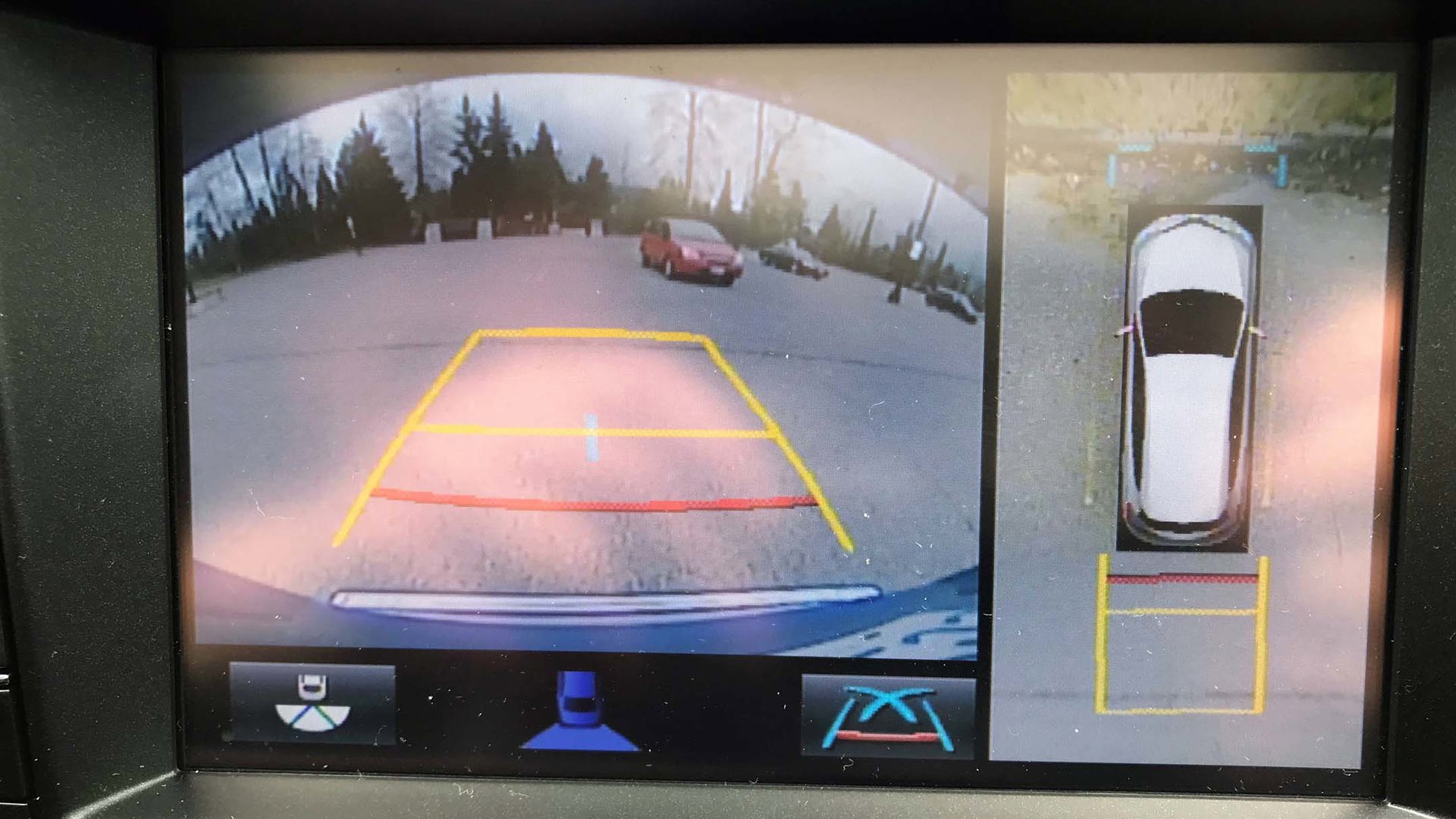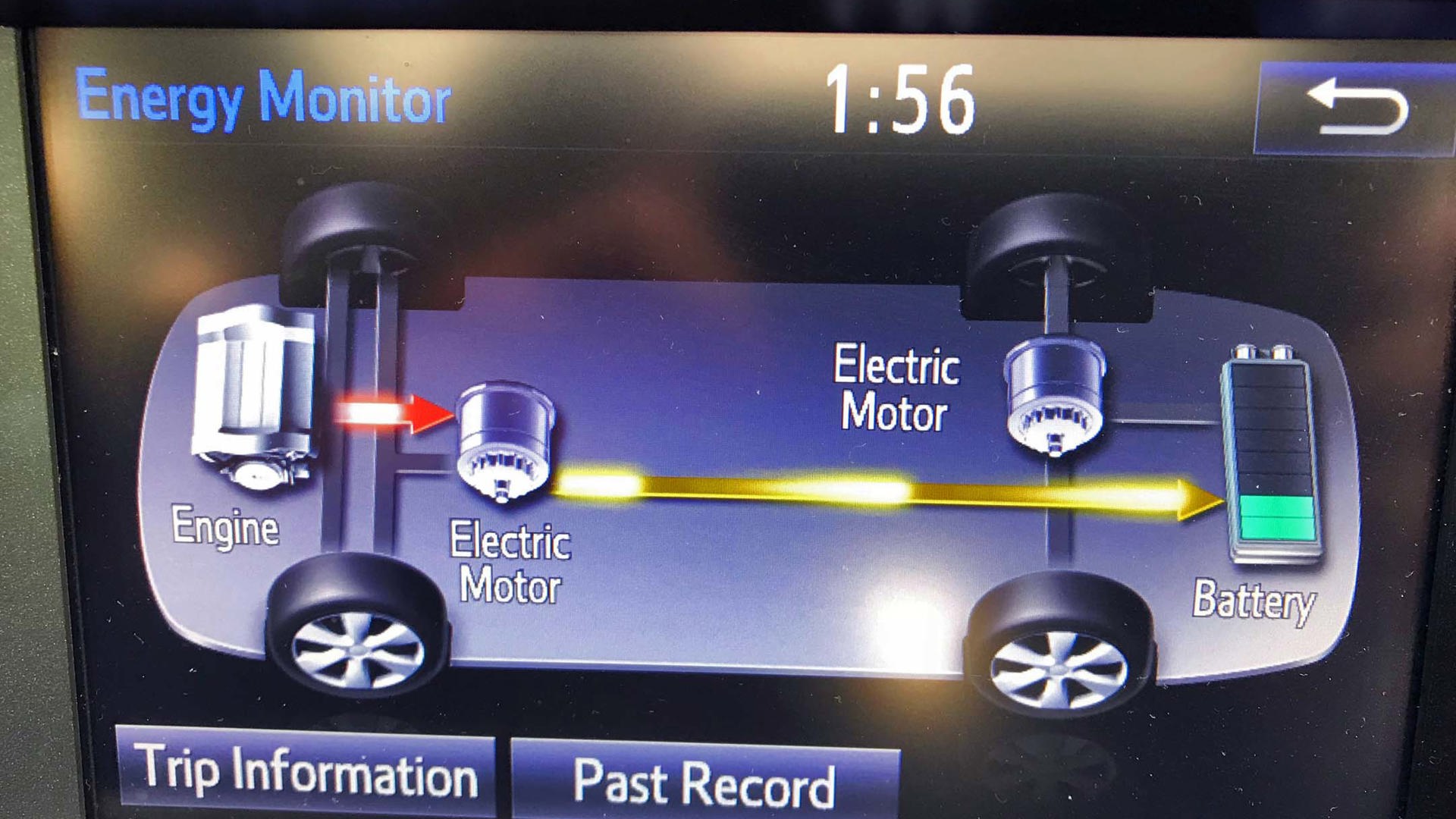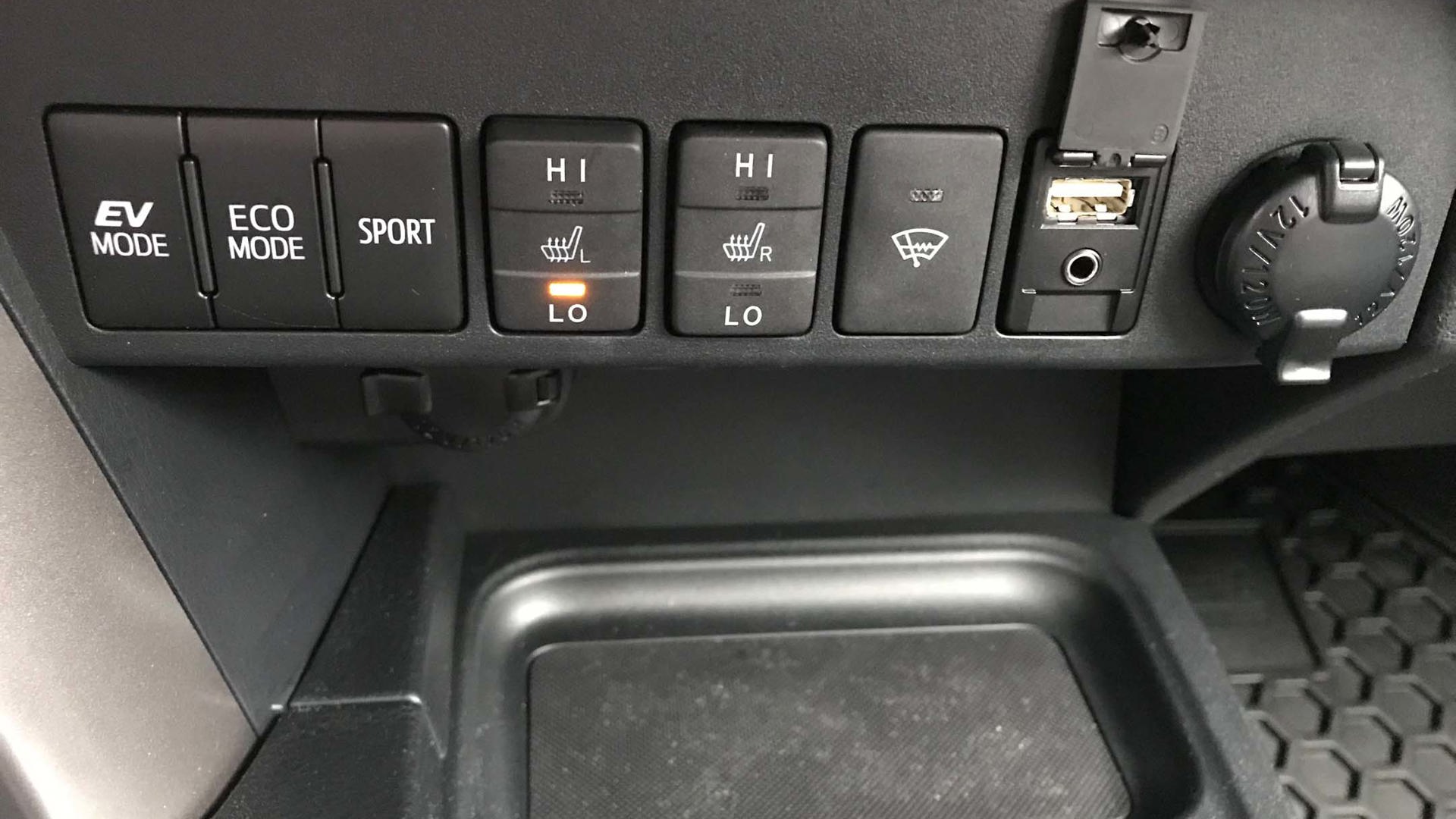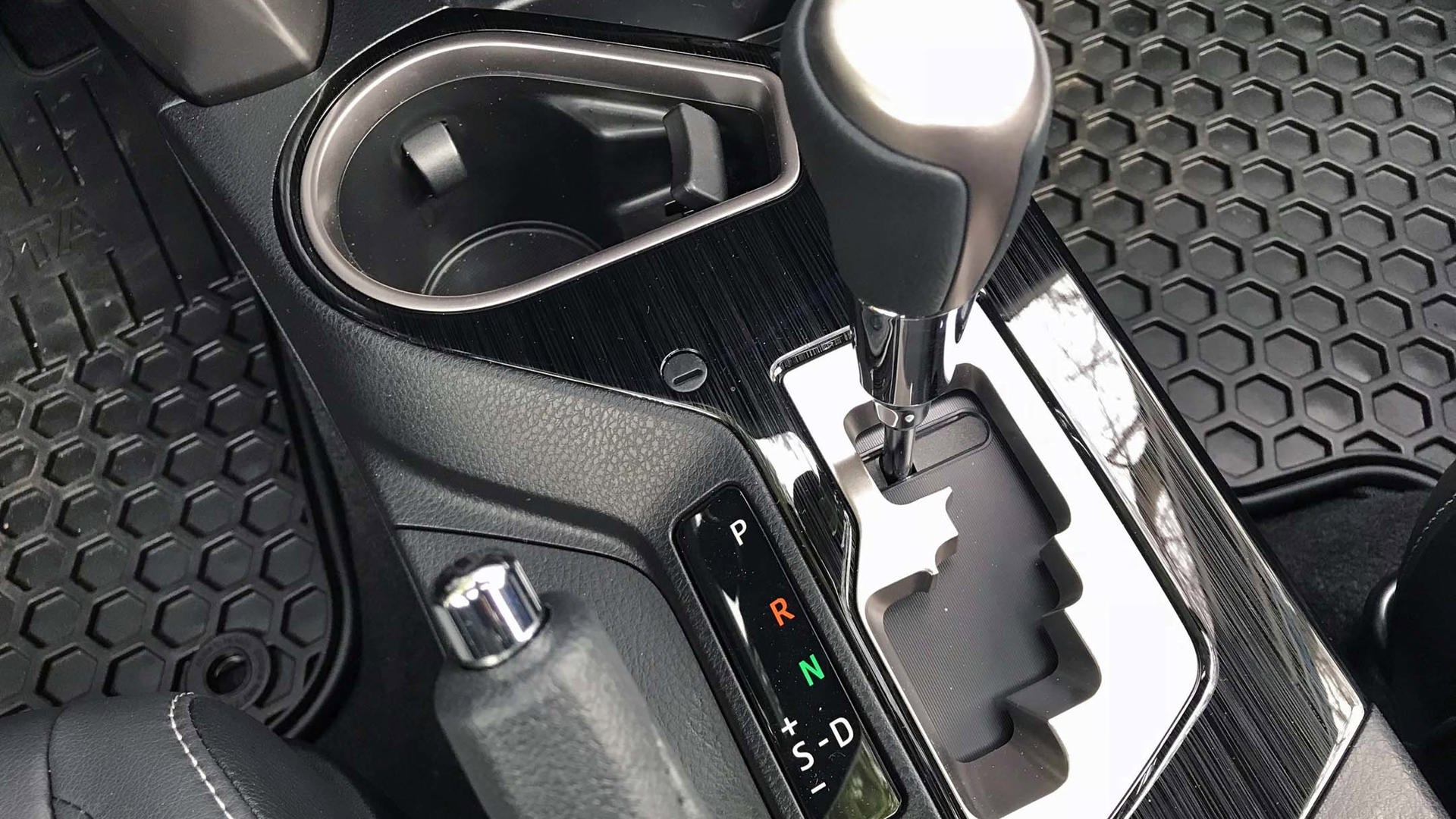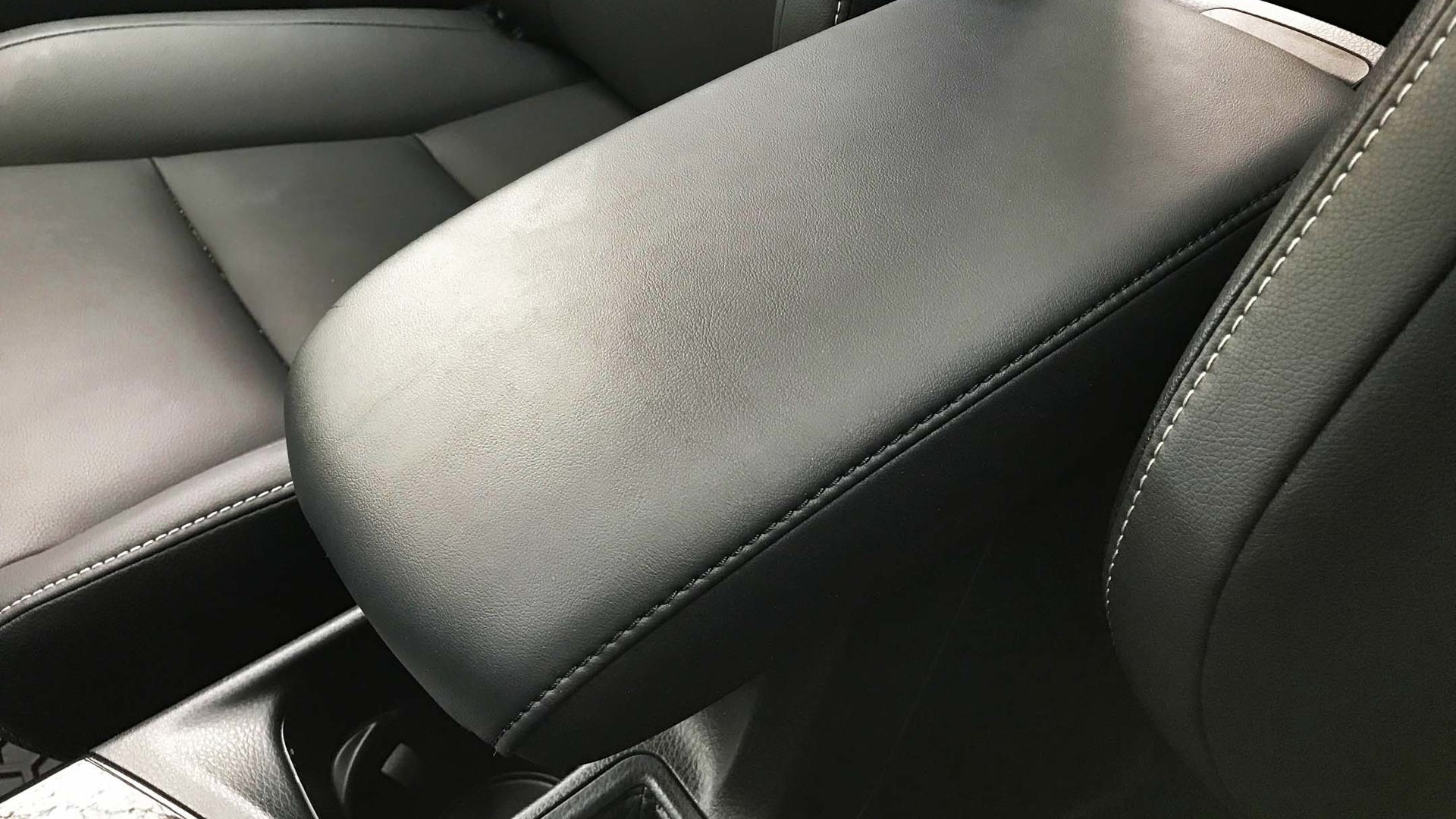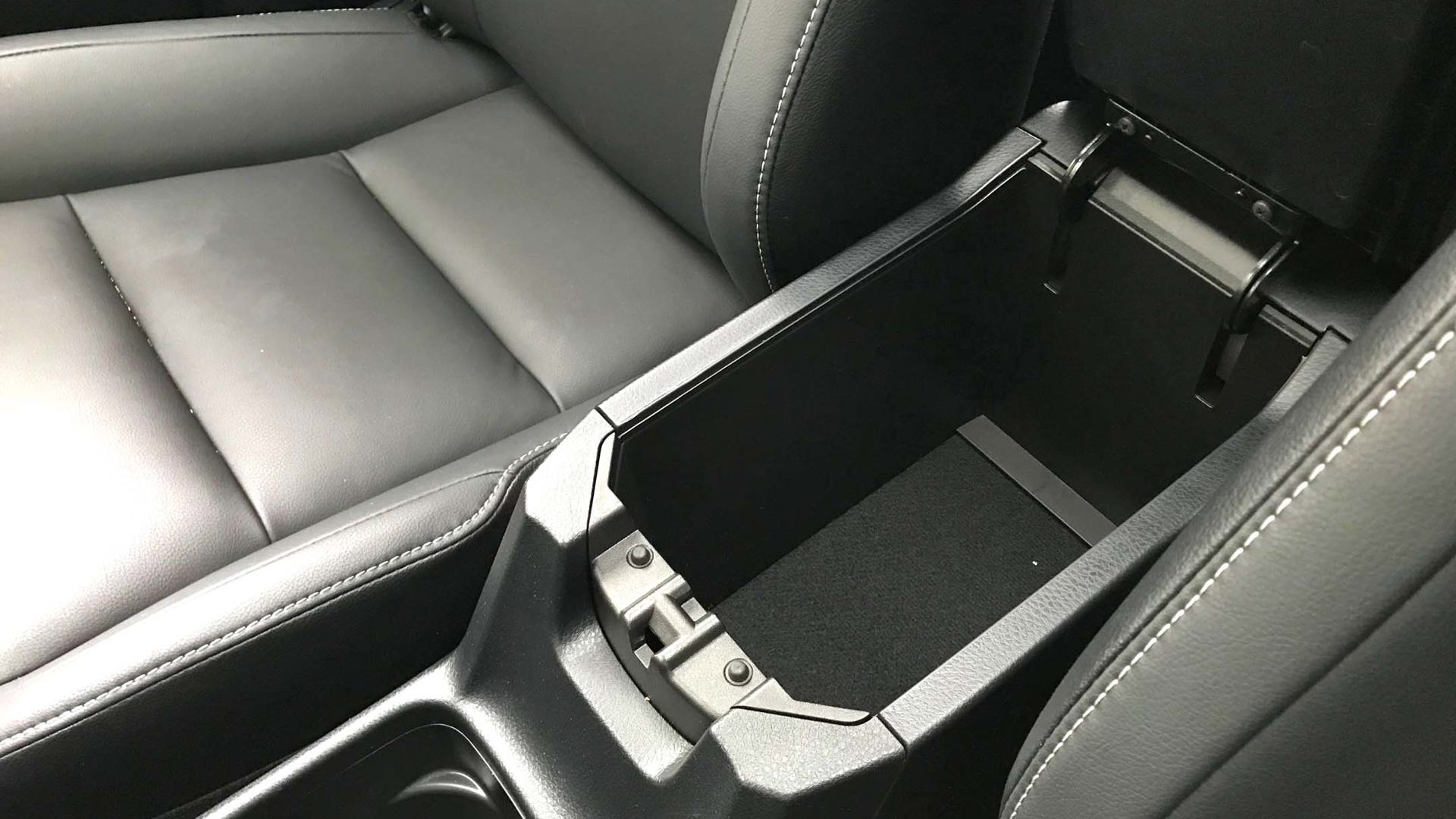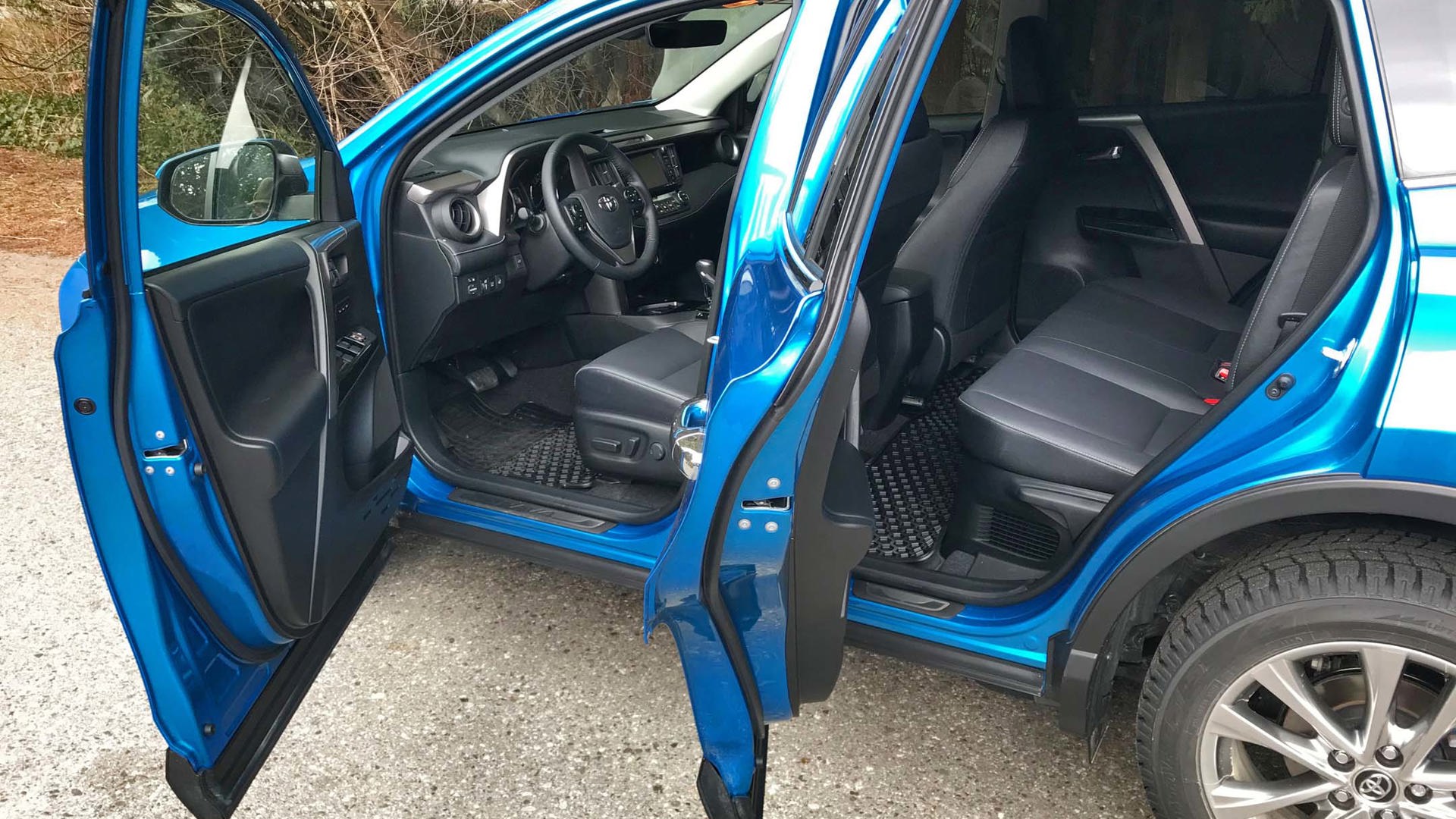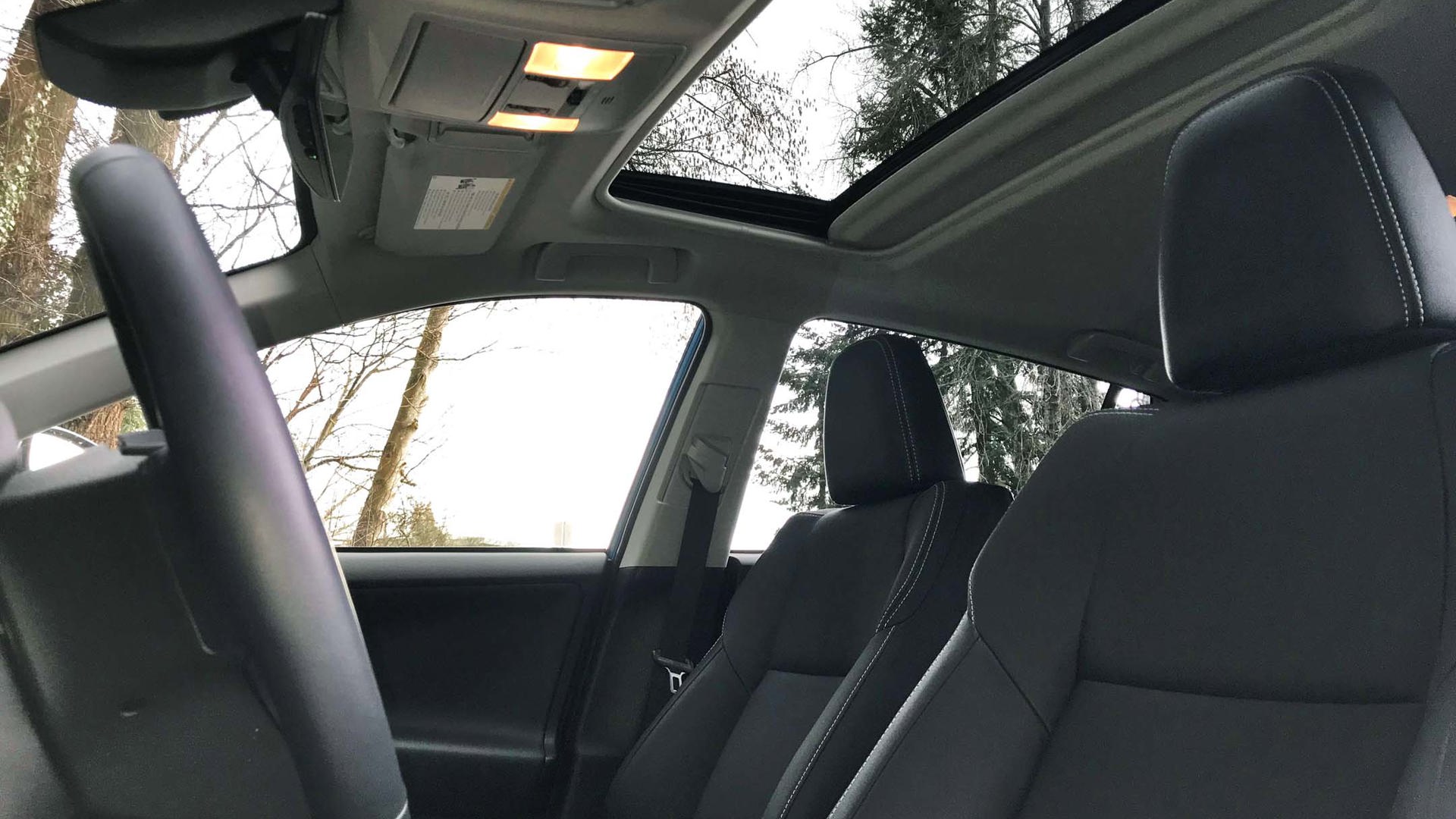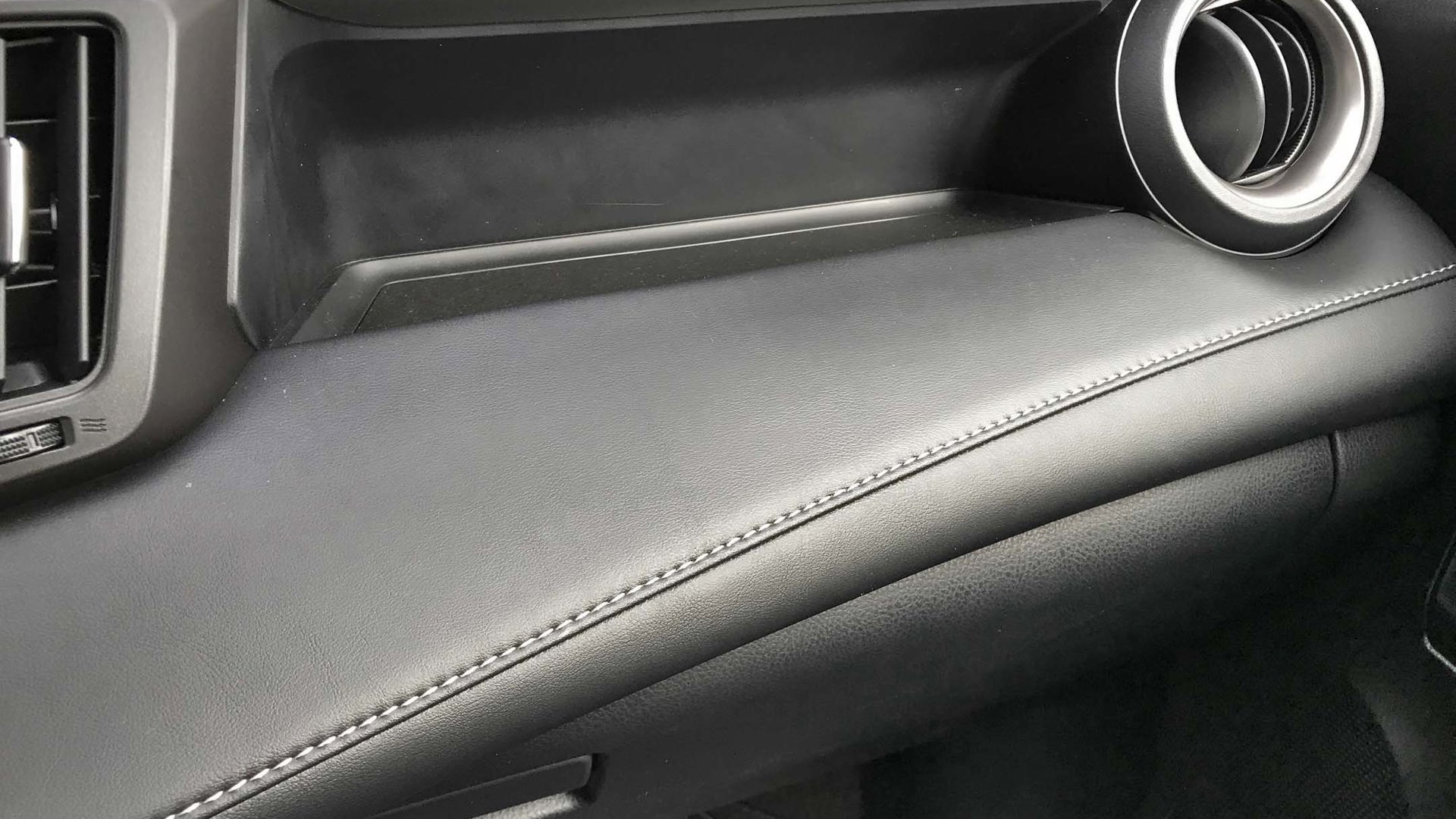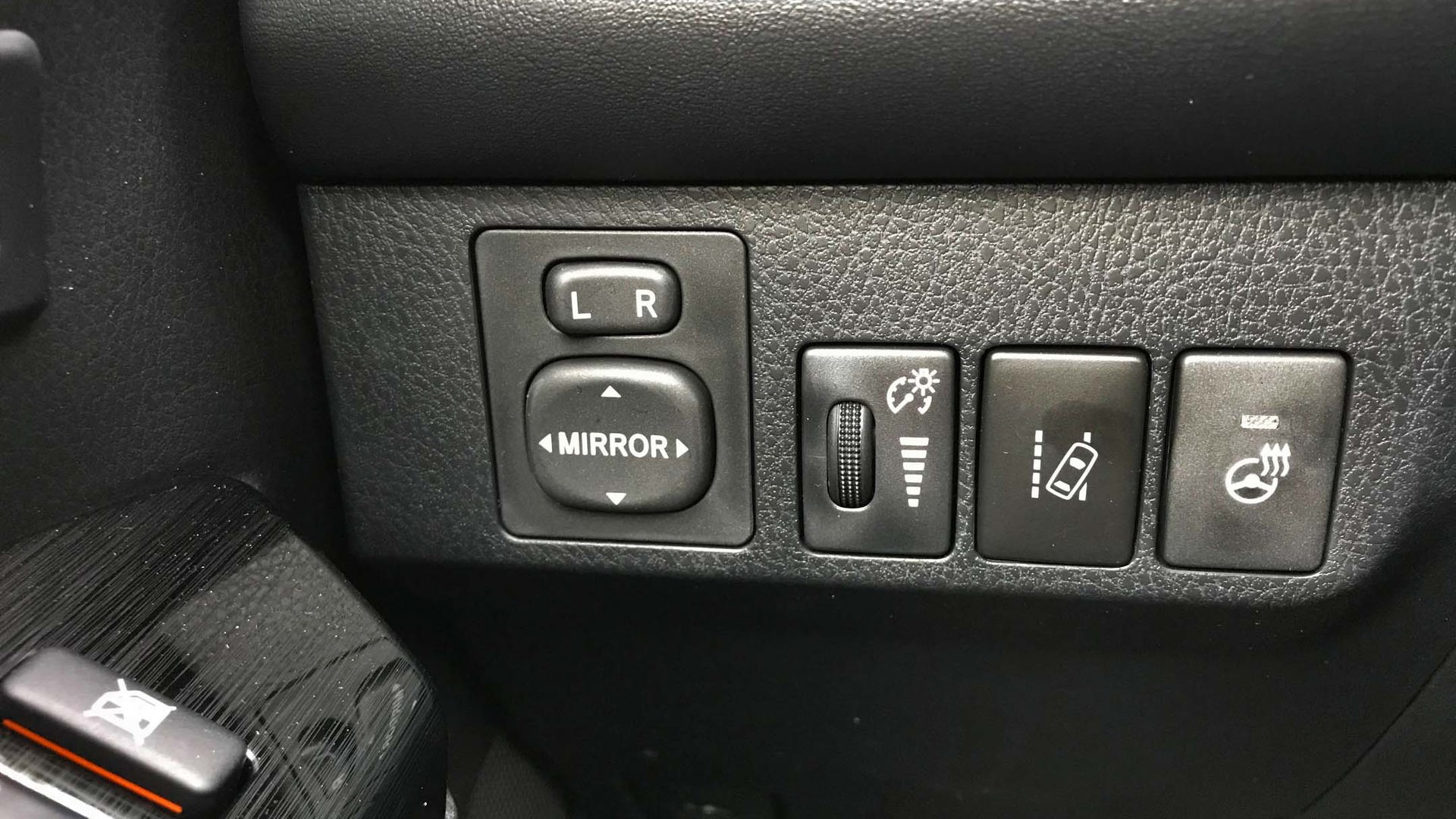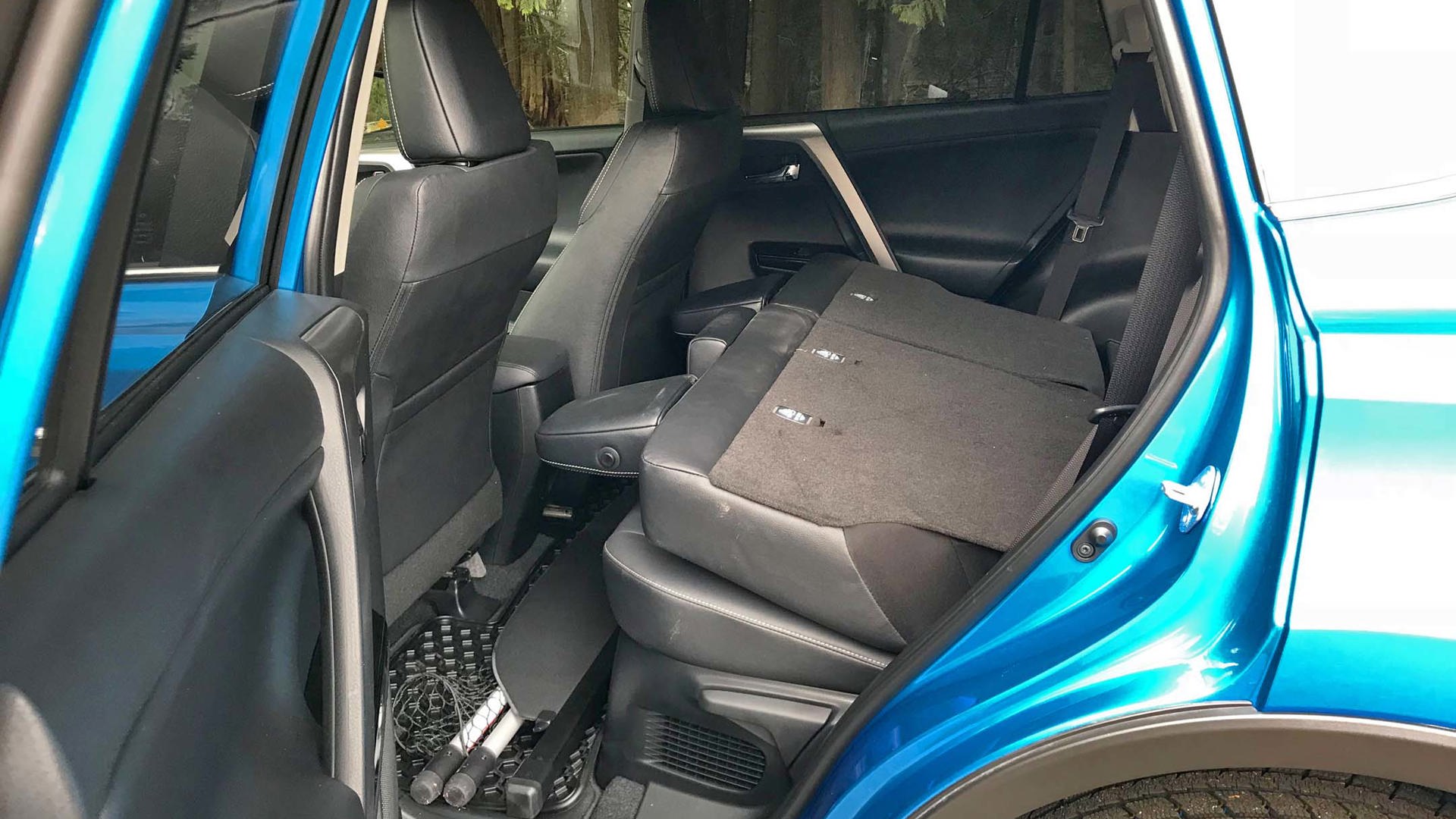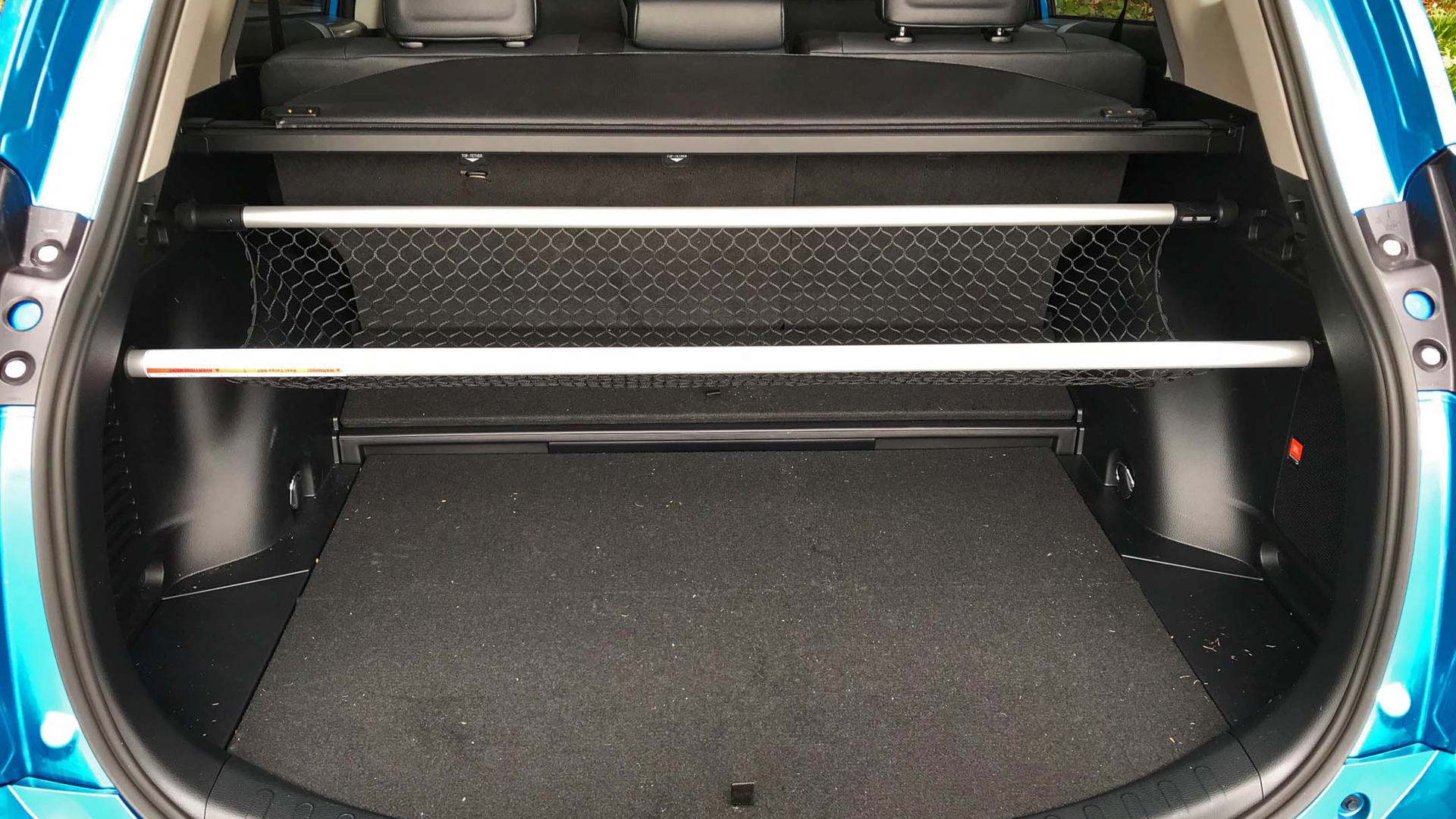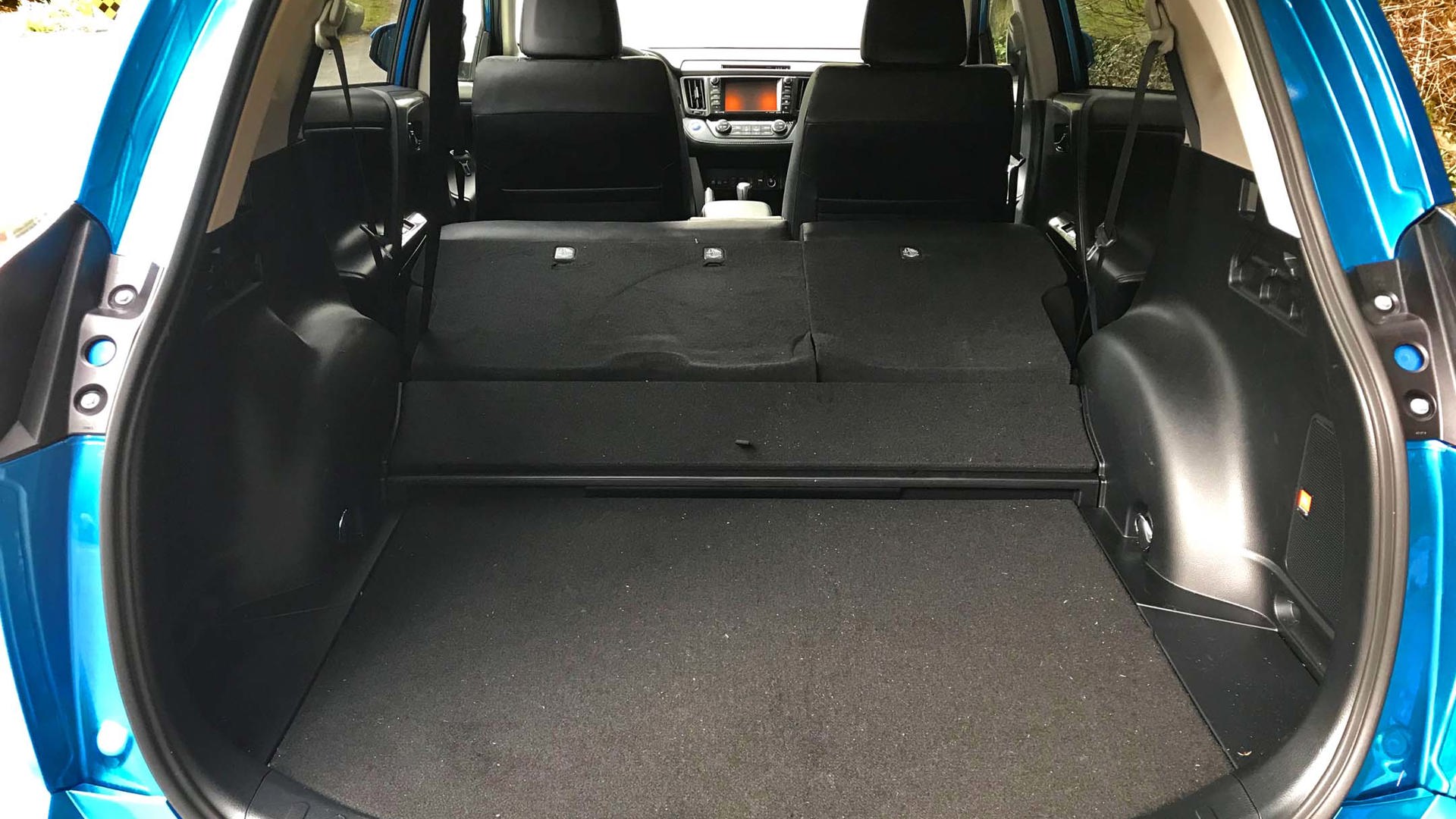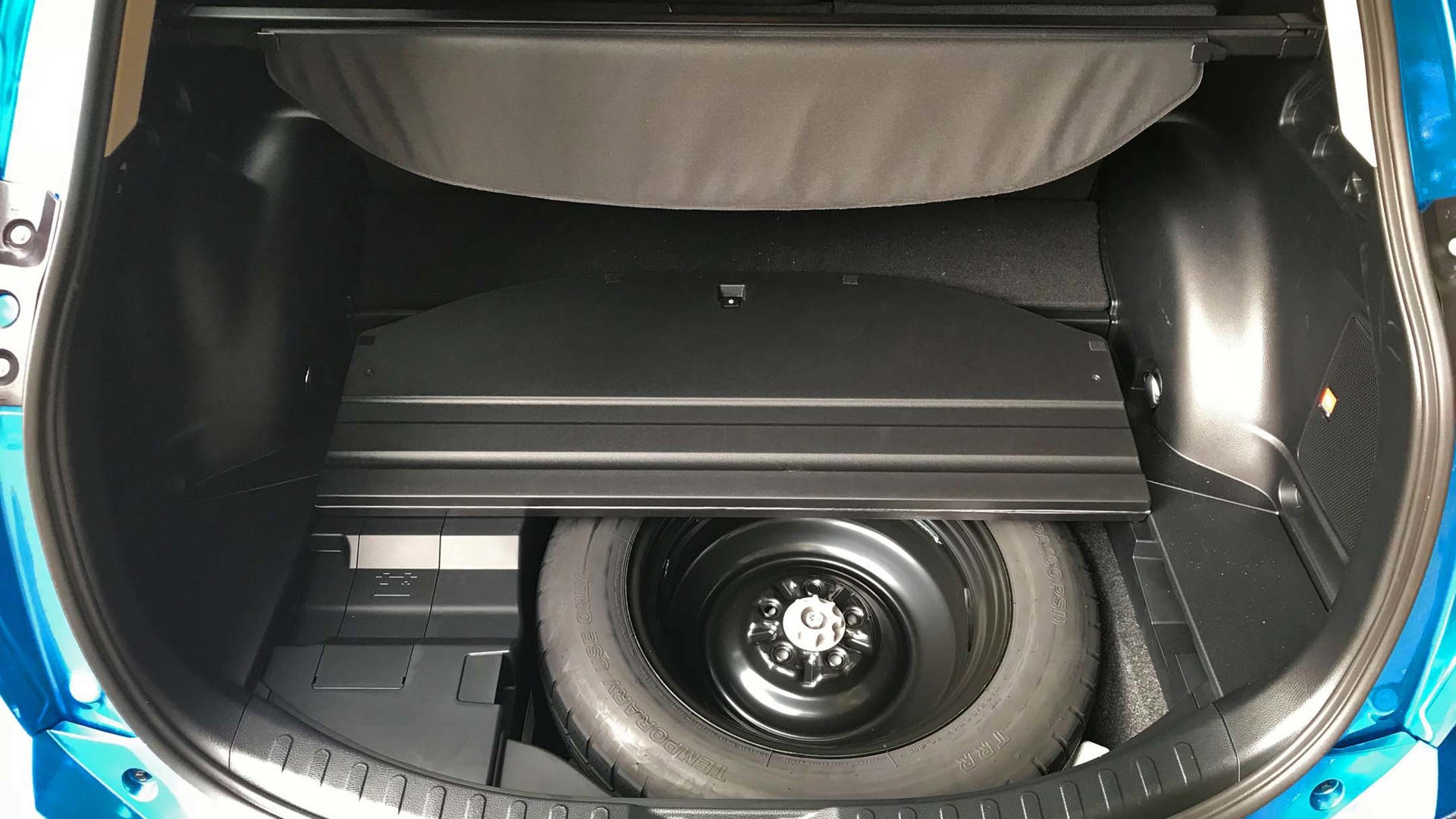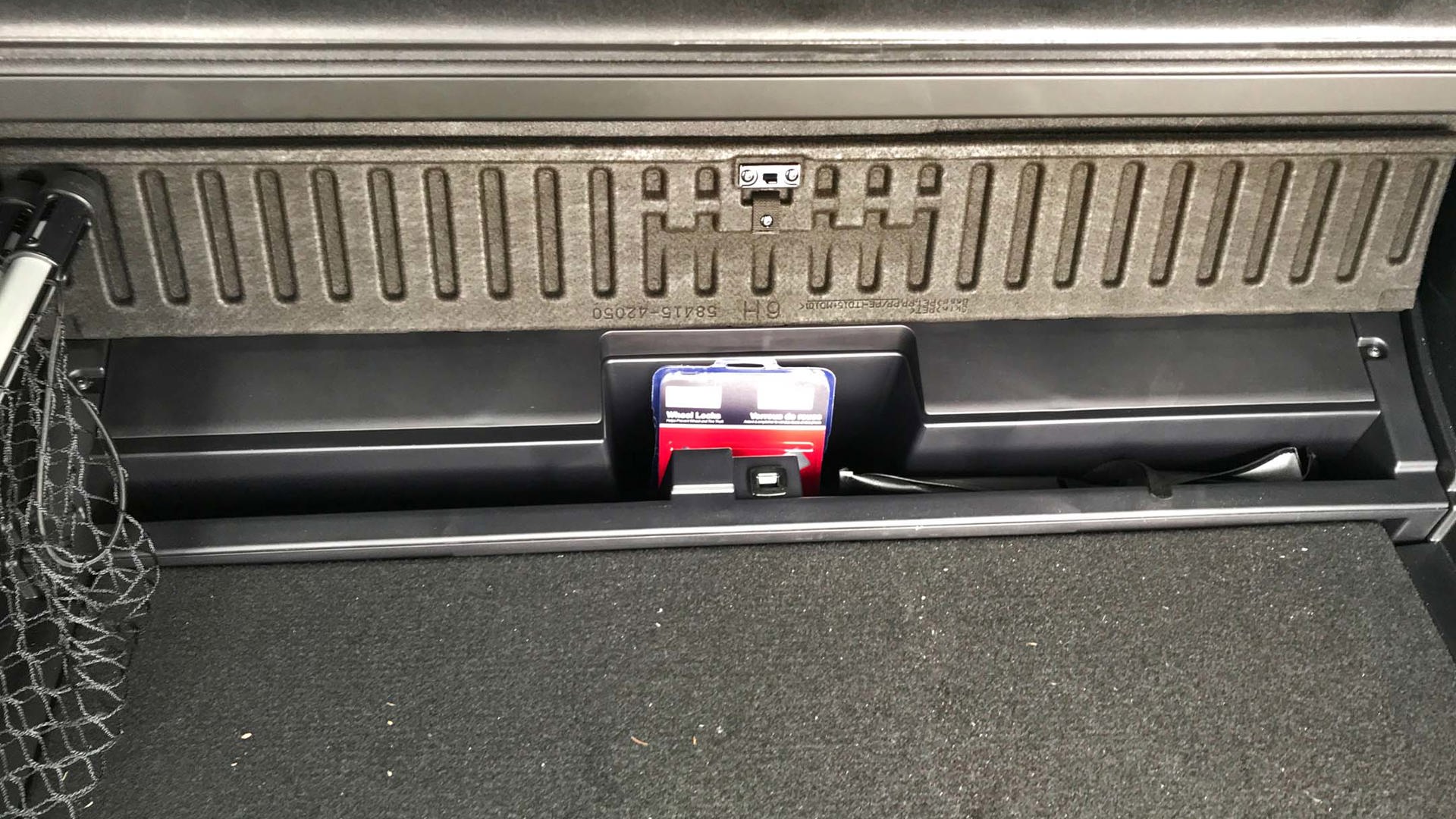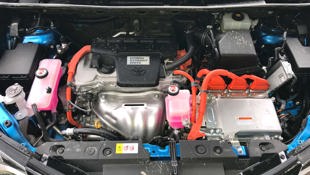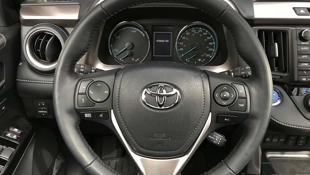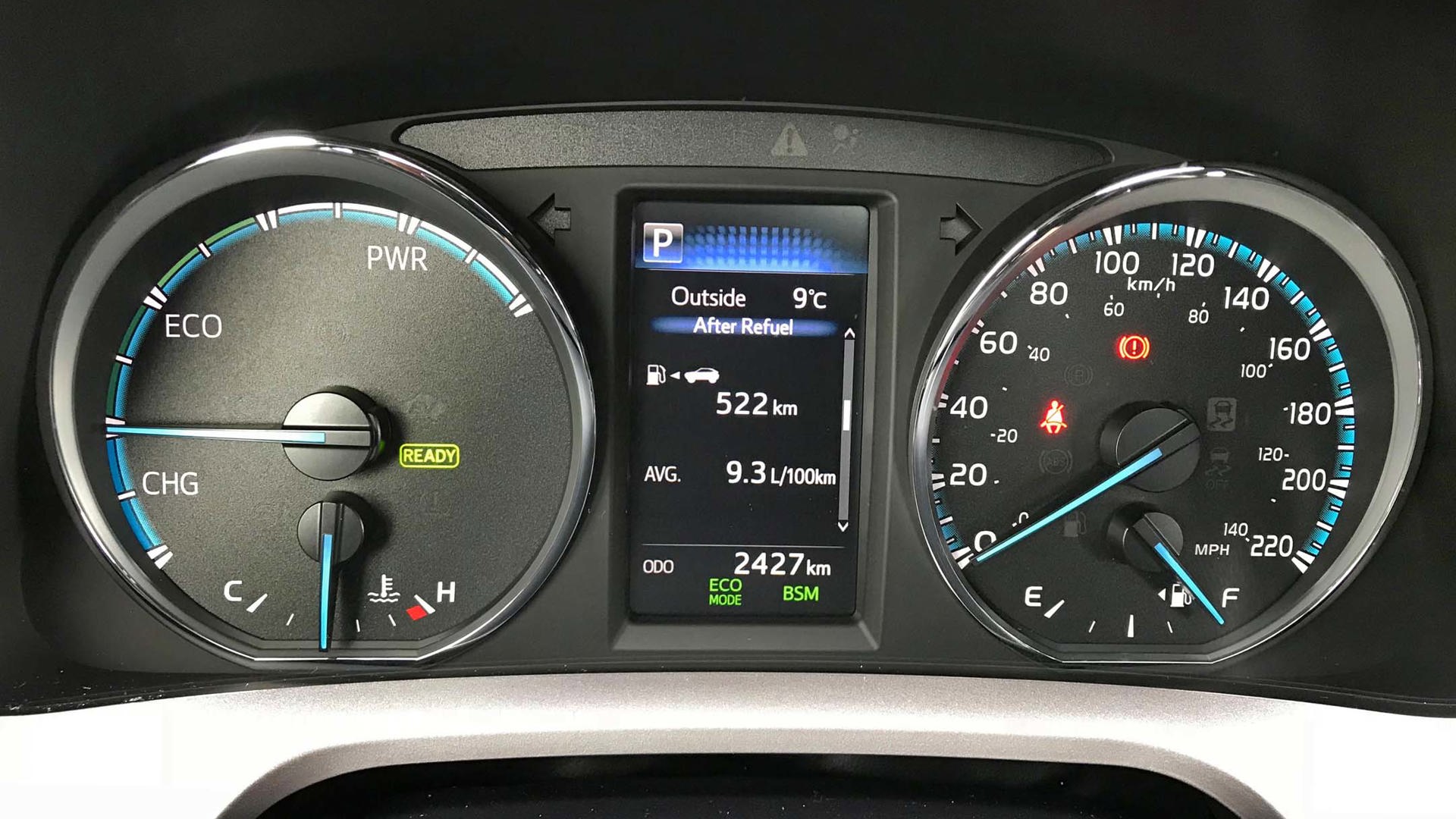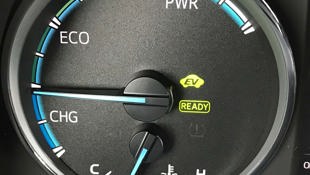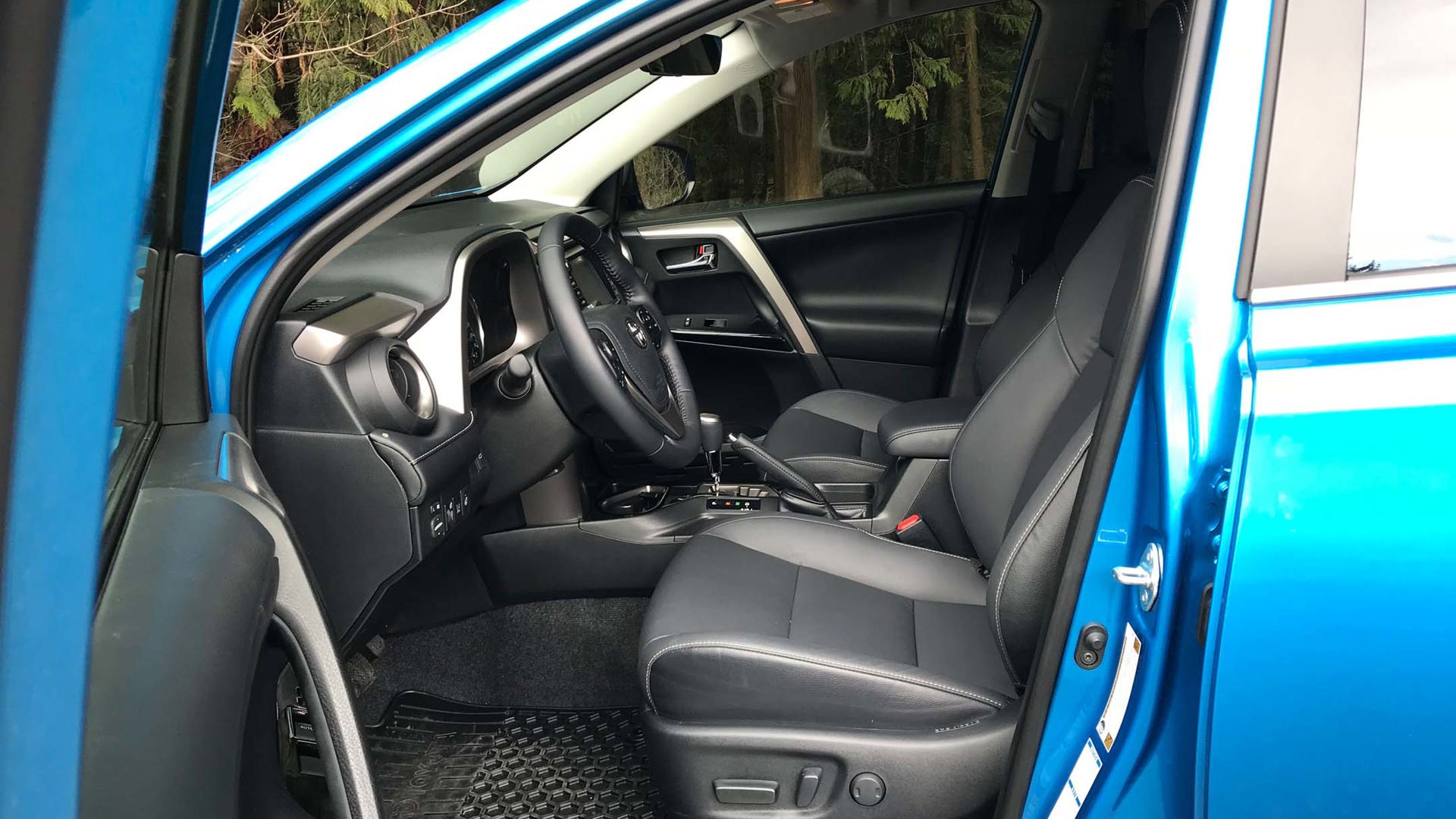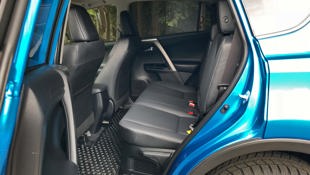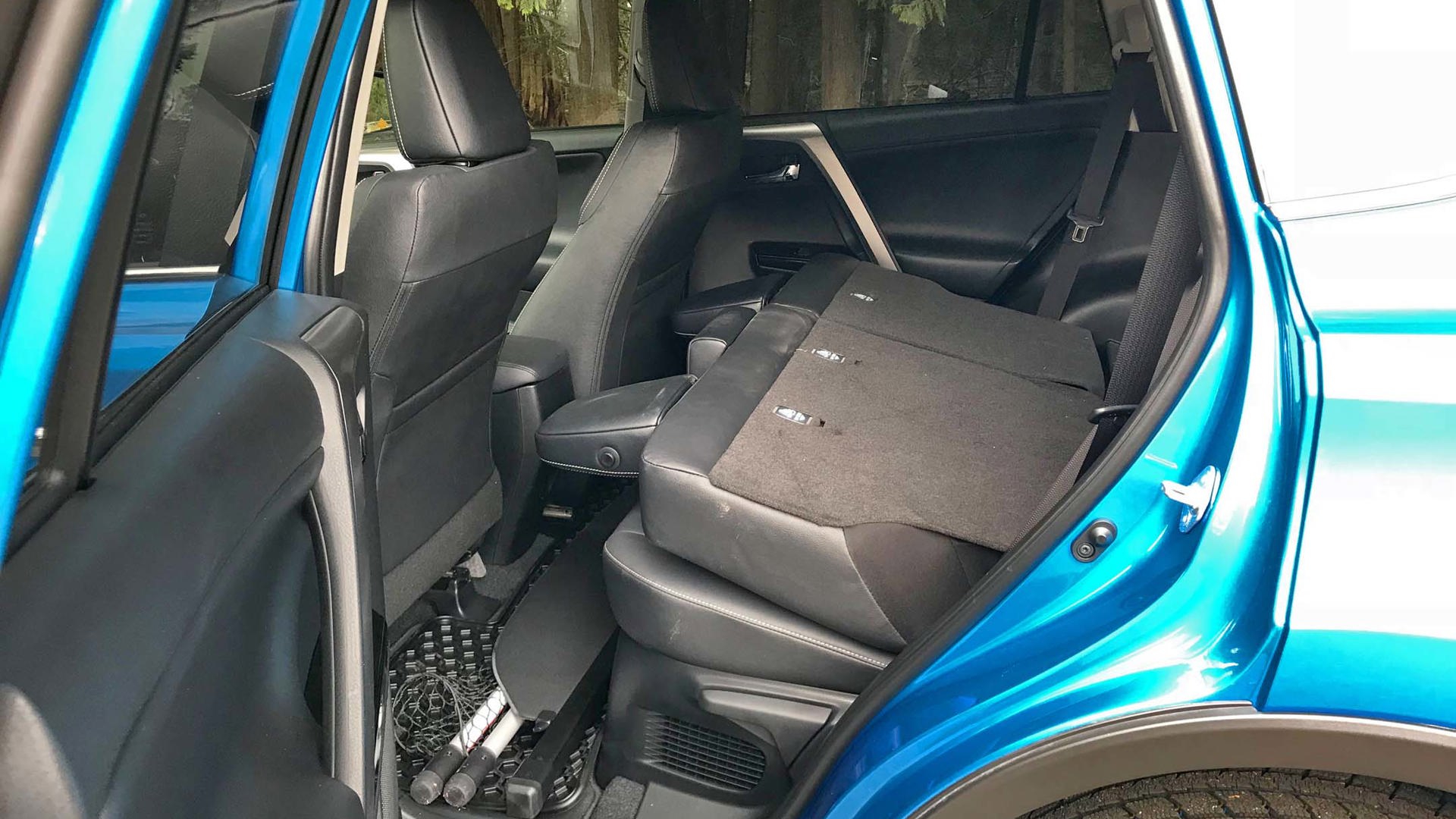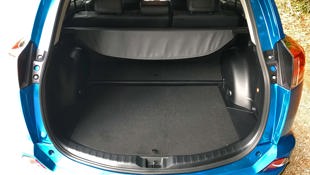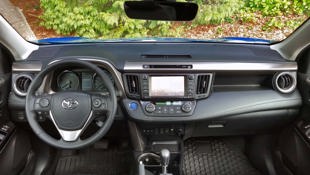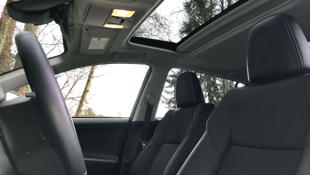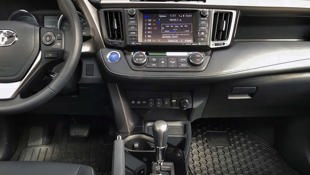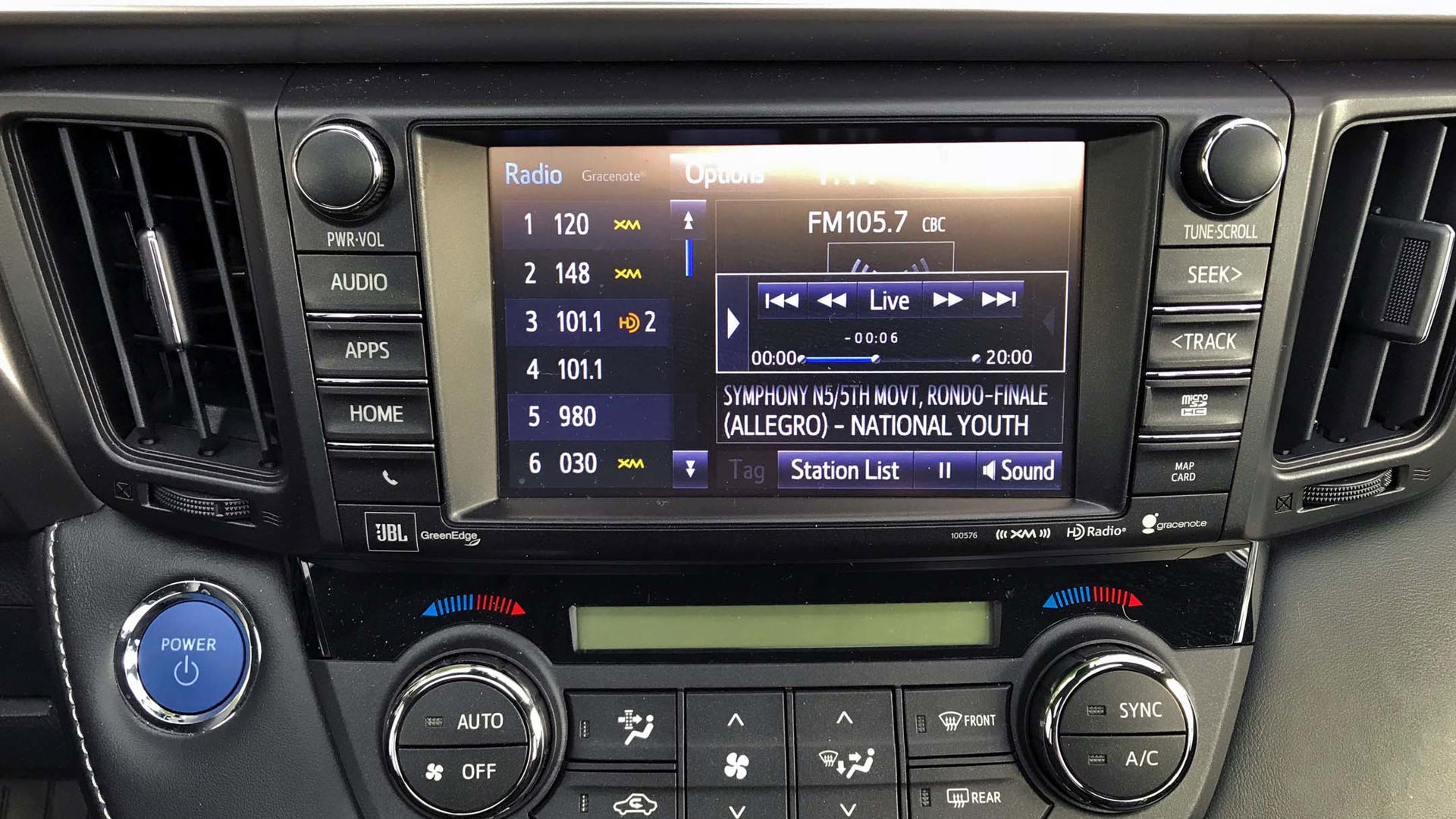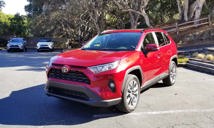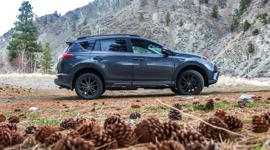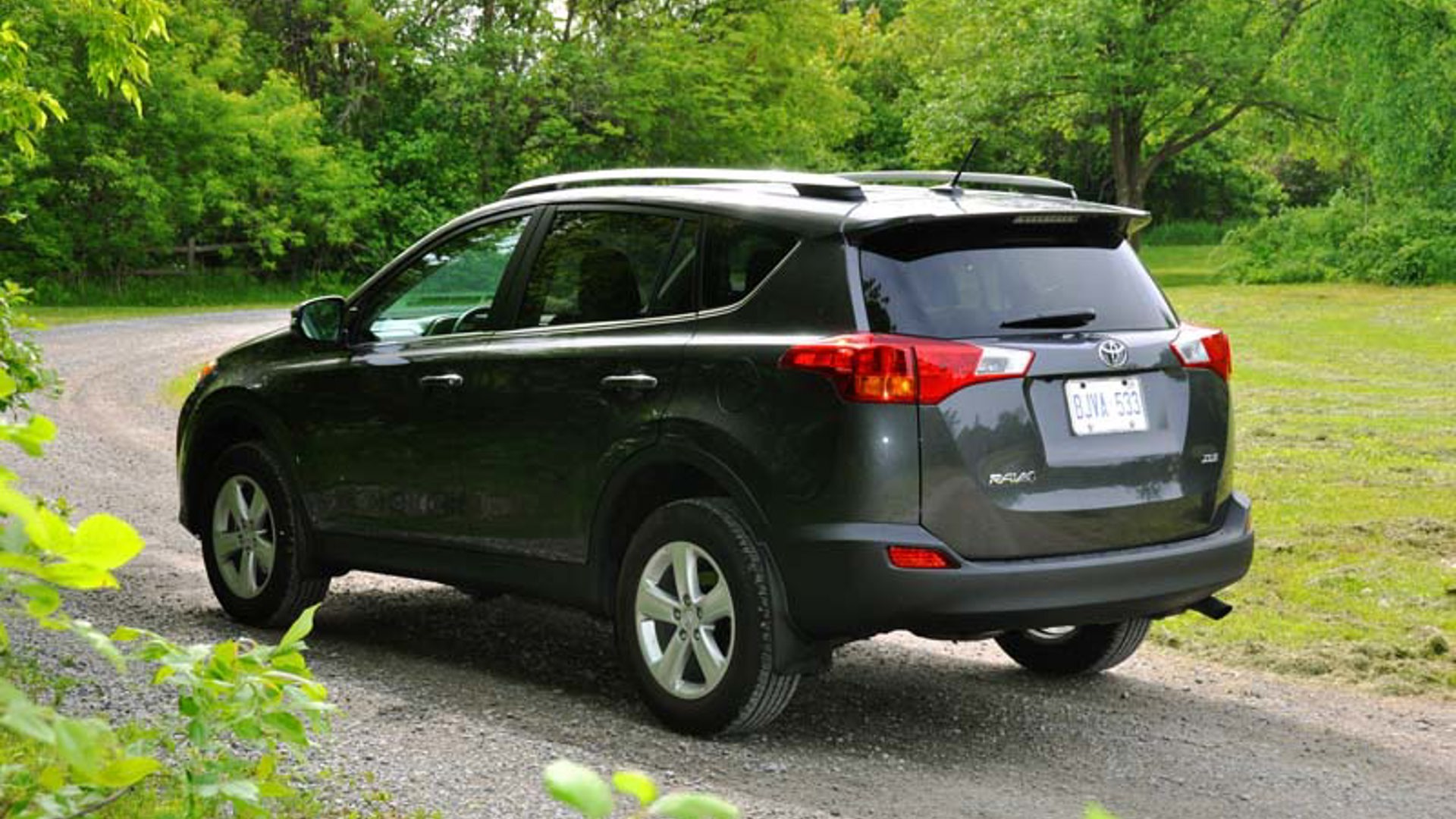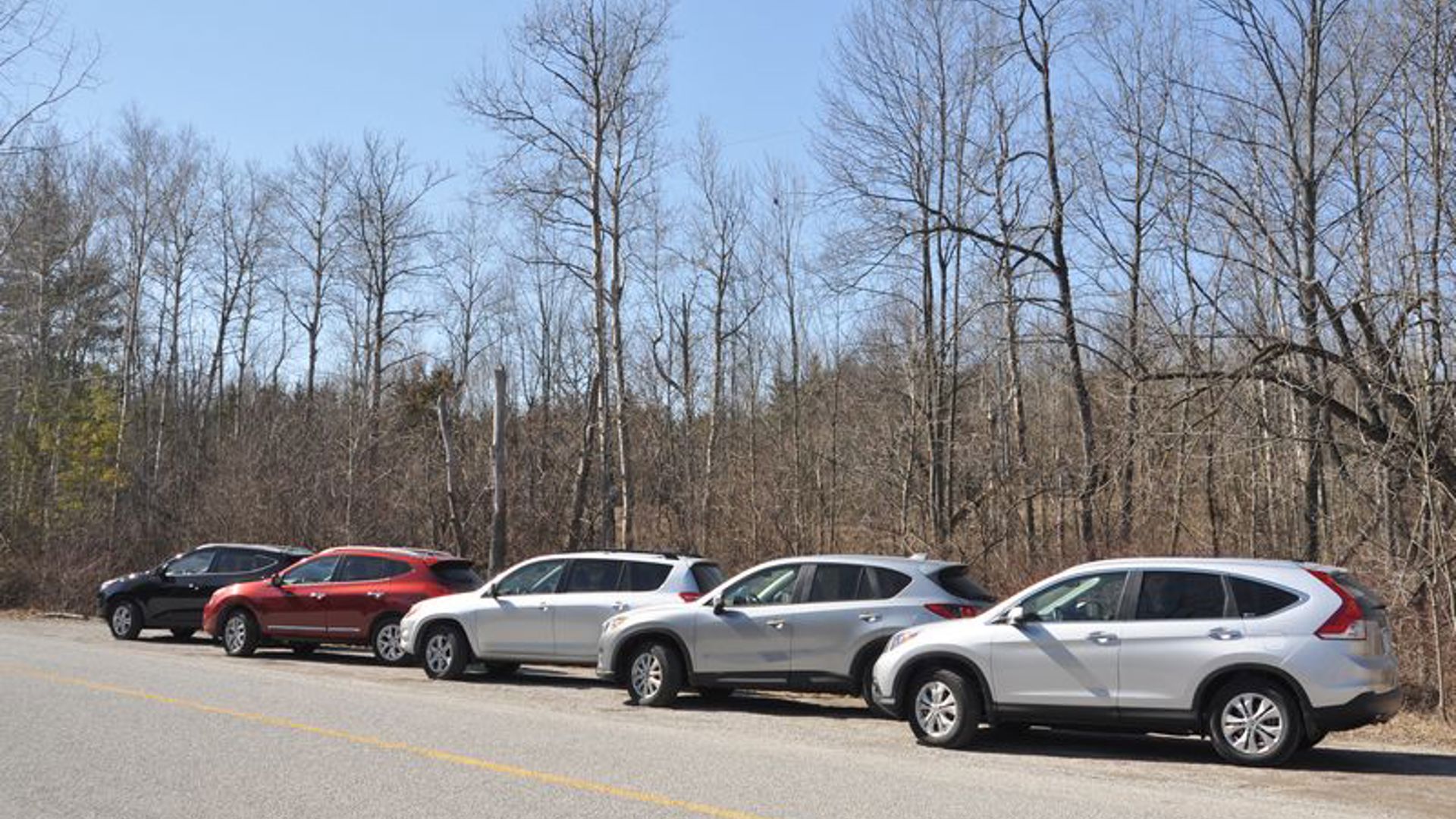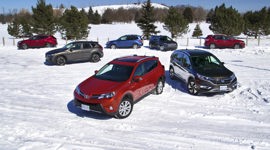 AutoTrader SCORE
AutoTrader SCORE
-
STYLING6/10
-
Safety7/10
-
PRACTICALITY8/10
-
USER-FRIENDLINESS7/10
-
FEATURES9/10
-
POWER6/10
-
COMFORT7/10
-
DRIVING FEEL6/10
-
FUEL ECONOMY8/10
-
VALUE7/10
The 2018 Toyota RAV4 Hybrid is basically unchanged this year as Toyota prepares to introduce an all-new RAV4 and RAV4 Hybrid for the 2019 model year. They’re expected to go on sale in the fall of 2018 and early in 2019 respectively, and will have new truck-like styling similar to the Tacoma pickup, a roomier cabin, and improved safety and performance.
Roomy, comfortable, practical, and fuel-efficient family vehicle with exceptional safety features.
Meanwhile, the compact 2018 Toyota RAV4 Hybrid, last year’s winner of the AJAC Green Utility Vehicle of the Year Award, remains one of the few compact SUVs available in Canada with a gas-saving hybrid powertrain. Given that small SUVs are the hottest vehicles on the market right now, and the price of gasoline has surged recently, the RAV4 Hybrid seems to be the right vehicle, in the right country, at the right time.
On average, the RAV4 Hybrid’s fuel economy is about 25 percent better than a non-hybrid RAV4 AWD, according to NRCan’s combined fuel consumption figures. How much will that save you at the pump? At the time of this review, the price of a litre of regular gas in Toronto was hovering around $1.27/L. Driven 20,000 km per year, a RAV4 Hybrid Limited, like this tester, would save the owner $609 a year in fuel when compared with a standard RAV4 Limited.
In Vancouver, where regular gas was up to $1.55/L in March, the Hybrid would save about $744 a year in fuel costs when compared to a regular RAV4.
Your mileage may vary
Even with those annual gas savings though, it takes a long time to make up the difference in price between a RAV4 and a RAV4 Hybrid AWD. A hybrid RAV4 is priced between two and four thousand dollars more than a non-hybrid RAV4 AWD, depending on the trim level. By my calculation, it would take between three to six years to make up the difference in the initial price.
As well, our experience indicates that the RAV4 Hybrid’s real-world fuel consumption figures are higher than the official fuel economy ratings. During my week with the RAV4 Hybrid, my average fuel consumption was 8.9 L/100 km. A previous driver of this vehicle had managed to achieve 7.8 L/100 km. And a couple of years ago, editor Jacob Black achieved 8.0 L/100 km in a similar RAV4 Hybrid. All of these exceed the official NRCan combined rating of 7.3 L/100 km.
As with most hybrids, the RAV4 Hybrid gets better fuel economy in city driving than in highway driving due to the increased use of battery power and more regenerative braking in the city. If you do more freeway driving, you can expect your overall fuel consumption to be greater – the opposite situation of a non-hybrid vehicle.
You might think the RAV4 Hybrid would be slower than a regular RAV4, but despite weighing between 140 and 155 kg more than a non-hybrid RAV4 AWD, the RAV4 Hybrid is quicker in a straight line. During AJAC’s annual Car of the Year testing last year, a RAV4 Hybrid Limited went from zero to 100 km/h in 9.0 seconds, about a second faster than a regular RAV4 AWD. The Hybrid’s combined internal combustion/electric powertrain puts out a total of 194 horsepower compared to the non-hybrid’s 176 horsepower.
The 2018 RAV4 Hybrid is even capable of towing a trailer up to 795 kg (1,750 lb), but strangely, only the RAV4 Hybrid’s base LE+ trim level is rated for towing – the XLE, SE, and Limited are not. The RAV4 Hybrid LE+ includes trailer sway control, which automatically compensates for the side-to-side motion of a swaying trailer.
A difference you can hear
If you’re not familiar with hybrids, you might find the experience of driving a RAV4 Hybrid unusual when compared with a non-hybrid RAV4. To start the Hybrid, the driver presses the Power button on the dash as usual. A “Ready” light illuminates in the instrument cluster, but the gas engine may or may not start. Often, you can drive away slowly on electric power alone but the gas engine can start and stop by itself at any time to help charge the battery and supply power to the electric motors which drive the wheels.
We found the Hybrid’s 2.5-litre four-cylinder engine to be quite noisy when it starts while the vehicle is stopped; and since you never know when it will start or stop, it often surprises (perhaps startles) you. It’s also somewhat noisy when accelerating briskly, but in steady-state driving, engine noise isn’t intrusive.
With four selectable driving modes: Normal, Eco, Sport, and EV – the driver can choose the balance of performance and fuel economy they want: Normal is the default mode, while Eco reduces throttle responsiveness to save fuel, and Sport improves acceleration for better performance. While Eco mode performance is underwhelming, I found that I could use Eco mode in everyday driving without feeling that I would be overtaken by an ambitious Vespa scooter (unlike some other hybrids). Sport mode, on the other hand, adds a noticeable kick in the pants to the acceleration and overall performance of the RAV4 Hybrid.
When coming to a stop at a traffic light, the RAV4 Hybrid’s engine automatically shuts off (if it is running), and restarts as you release the brake pedal. This is a fairly smooth and seamless affair that saves gas.
Manually switching to EV mode forces the vehicle to run on battery power alone at speeds up to 40 km/h, but anything more than a gentle push on the accelerator will deactivate it and revert back to Normal mode. When this happens, a message in the instrument cluster says, “You depressed the accelerator pedal too far.” Though I was personally offended at this criticism of my driving abilities, I knew there was no arguing with the machine.
While the RAV4 has a six-speed automatic transmission, the Hybrid RAV4 has a continuously variable transmission. With a CVT, there are no discernible gear changes when accelerating and the engine will speed up to a constant rpm and stay there until the gas pedal is released. That’s a different experience than the rise and fall of engine sound in a vehicle with a traditional automatic transmission. Though I’ve driven many hybrids over the years, I still can’t get used to this sustained engine drone.
Alternatively, you can use the shifter’s manual sequential shifter which simulates gear changes, but it seems oddly out of place in a family-oriented SUV.
The RAV4 Hybrid’s electric motor emits a noticeable whine when coming to a stop at a traffic light. At first, this is kind of cool, like some futuristic space-age technology, but after a while you get tired of the whining. As well, the RAV4 Hybrid’s regenerative brakes, which feed some energy back into the 245-volt nickel–metal hydride battery, have a slightly touchier feel than regular brakes, although not overly so.
All these hybrid-related differences in the RAV4 Hybrid affect the driving experience in ways that might seem strange to some drivers. I would urge all potential purchasers of a RAV4 Hybrid to take a lengthy city/highway test drive before buying.
Confident handling, and lots of safety features
All-wheel drive is standard in all RAV4 Hybrids, but it is a different system to the gas-only RAV4 AWD. It operates in front-wheel drive until slippage is detected, then an electric motor on the rear axle activates to power the rear wheels. During my test drive in rain-soaked Vancouver, I found that it offered grippy, drama-free traction in city and highway driving. Our test vehicle was equipped with Toyo 235/55R18 winter tires, which were great in the rain but a bit noisy on dry pavement – not unusual for winter tires.
The RAV4 Hybrid rides comfortably on the freeway and handles well with minimal lean when cornering, but the vehicle feels heavy and the ride is a bit stiff over rough surfaces and road depressions. With standard 18-inch tires and a turning diameter of 11.2 metres (36.7 ft), the RAV4 Hybrid Limited can successfully make most U-turns, but the base LE+ model with smaller 17-inch tires has an even tighter turning circle of 10.6 m (34.8 m).
All RAV4 Hybrids are equipped with a surprisingly lengthy list of standard safety equipment designed to minimize or avoid collisions. In addition to brake assist, the RAV4 Hybrid includes lane-departure alert with steering assist, a pre-collision system with pedestrian detection, automatic high-beams, and dynamic radar cruise control. A blind-spot monitor and rear cross-traffic alert are standard on all but the base trim.
As well, The RAV4 Hybrid’s standard rear-view camera is a bumper’s best friend when reversing into parking spaces. The camera offers a top-down 360-degree view as well as three rear views: normal, narrow and wide angles. You can also choose guidelines to help you park: a single red line, yellow positioning lines, and blue directional indicators.
Interior space and amenties impress
With its tall roof and upright sides, the RAV4 Hybrid’s cabin is spacious enough for four or five adults. There’s plenty of headroom and legroom in the front and rear, and rear seats have anchors and tethers for three rear child seats. All four passenger doors are large and drop down to the bottom of the side sills so that dirt won’t accumulate there and soil your pant legs when getting in and out. The step-in height is not too high, the driver sits fairly tall and outward visibility is good.
My RAV4 Hybrid Limited tester had an eight-way power driver’s seat with power in/out/up/down lumbar support, which proved very comfortable for my average frame. But even in the Limited trim, the front passenger seat offers only manually operated recline and height adjustments. At the rear, the contoured outboard rear seats are comfortable, the rear floor is flat, and there’s generous footroom under the front seats. If the middle seat is not occupied, a padded fold-down centre armrest includes two cupholders.
The RAV4’s dashtop is fairly flat – a potential dust collector, in my opinion – while the front of the instrument panel appears imposing because the centre stack protrudes well forward into the cabin. That makes it easy to reach the centre touchscreen and radio and heater controls, but the row of buttons under the climate control are almost hidden from view. That’s where you’ll find the Drive mode buttons (EV, Eco, Sport), seat heaters, and 12-volt, USB, and auxiliary ports.
All 2018 RAV4 Hybrids include standard power driver’s seat, heated front seats, dual-zone automatic climate control, push-button ignition, touchscreen with Bluetooth, power windows and locks, 60/40 folding rear seatbacks, rain-sensing wipers, power heated mirrors, rear privacy cover, fog lights, and alloy wheels.
The interior of our well-equipped Limited model was nicely finished with a leather-wrapped multi-function heated steering wheel, black leather seats with white stitching, leather hand-brake handle, padded centre armrest and leatherette padding on the dash. However, the titanium-coloured plastic dash trim looks like, well, titanium-coloured plastic.
The instrument cluster includes a traditional round speedometer on the right and a real-time electric charging indicator on the left. While driving, this gauge tells the driver when the battery is being charged by the regenerative braking and when the battery is feeding power to the electric motors to drive the wheels.
Ergonomics largely solid, with some exceptions
Between those two gauges is a small 4.2-inch TFT screen. Using buttons on the steering wheel, the driver can toggle between screens to find information about average fuel economy, audio source, real-time hybrid energy use, and safety systems activation.
Primary audio, phone, navigation and driver information is found in the large 7-inch touchscreen in the centre dash. With its combination of dials and hard buttons for major functions and touchscreen buttons for sub-menus, I found it quite easy to navigate. The home screen is a split-screen showing the most used functions at a glance: phone, audio, navigation, and clock. Unique to the Hybrid is an Eco screen where drivers can view their average fuel economy and fuel economy history as well as the real-time distribution of energy from the engine, electric motors, and battery while driving.
The touchscreen does not include the climate controls: they’re located just underneath the touch-screen with a separate LCD display.
Between the front seats is an attractive and useful centre console with an aluminum gated shifter, dark woodgrain trim, cupholders, coin tray, small bin and sliding centre armrest that opens up to reveal a shallow tray covering a fairly deep storage box.
The RAV4 Hybrid’s cargo area of 1,010 litres behind the rear seats is 80 litres smaller than the cargo compartment of a non-hybrid RAV4 due to the position of the big hybrid battery under the rear cargo floor. Still, it’s a large cargo space and it expands to 1,999 litres with the rear seatbacks folded down. My only criticism is that the rear seatbacks don’t fold flat, and the side walls are bare plastic which can scratch easily.
Conclusion
Overall, we found the 2018 Toyota RAV4 to be a roomy, comfortable, practical, and fuel-efficient family vehicle with exceptional safety features. However, the operation of the gas/electric hybrid drive system is sufficiently different from a regular gasoline vehicle to detract from the experience of driving and living with it.
2018 RAV4 Hybrids are available in four trim levels: LE+ ($34,635), XLE ($36,305), SE ($38,840), and Limited ($41,990).
The 2018 Toyota RAV4 Hybrid is assembled in Aichi, Japan, but the redesigned 2019 RAV4 Hybrid, available next year, will be built in Woodstock, Ontario, where regular RAV4s are currently assembled.
| Engine Displacement | 2.5L |
|---|---|
| Engine Cylinders | I4 |
| Peak Horsepower | 194 hp |
| Peak Torque | 206 lb-ft |
| Fuel Economy | 6.9/7.8/7.3 L/100 km city/hwy/cmb |
| Cargo Space | 1,010 / 1,999 L seats down |
| Model Tested | 2018 Toyota RAV4 Hybrid Limited |
| Base Price | $41,990 |
| A/C Tax | $100 |
| Destination Fee | $1,785 |
| Price as Tested | $43,875 |
|
Optional Equipment
None
|
|
